Of the total 6,620 buildings in the Koper district, 1,499 were destroyed during the war. Reconstruction took place slowly owing to a lack of a technical cadre, workforce, material, means of transport and, above all, money. In the first post-war period the problem of reconstruction was addressed by the technical base – an expert team of individuals engaged in resolving the most urgent problems in the field. Beginning in early 1946, reconstruction cooperatives were formed in villages, bringing together those whose homes had been burnt down and others. In 1952 they joined the agricultural cooperatives as their construction sections. The first construction enterprises began to be founded after 1947.
Reconstruction work in villages began with clearing away rubble, the provision of winter shelter for those whose homes had been destroyed, and repairs to public buildings and communications infrastructure. To begin with, they concentrated on repairing damaged structures. Later on, they began building new communications infrastructure, commercial buildings and schools. In 1948 “houses of the cooperative” began appearing in villages. These buildings were future centres of local economic and cultural life.
Reconstruction was carried out by means of large-scale mobilisation of the workforce, who took part in work campaigns through voluntary work, as it was known. The Slovene-Italian Antifascist Union organised “shock work campaigns” by work battalions and youth work brigades, encouraging them by means of competitions. The members of youth work brigades also built roads and railway lines throughout Yugoslavia.
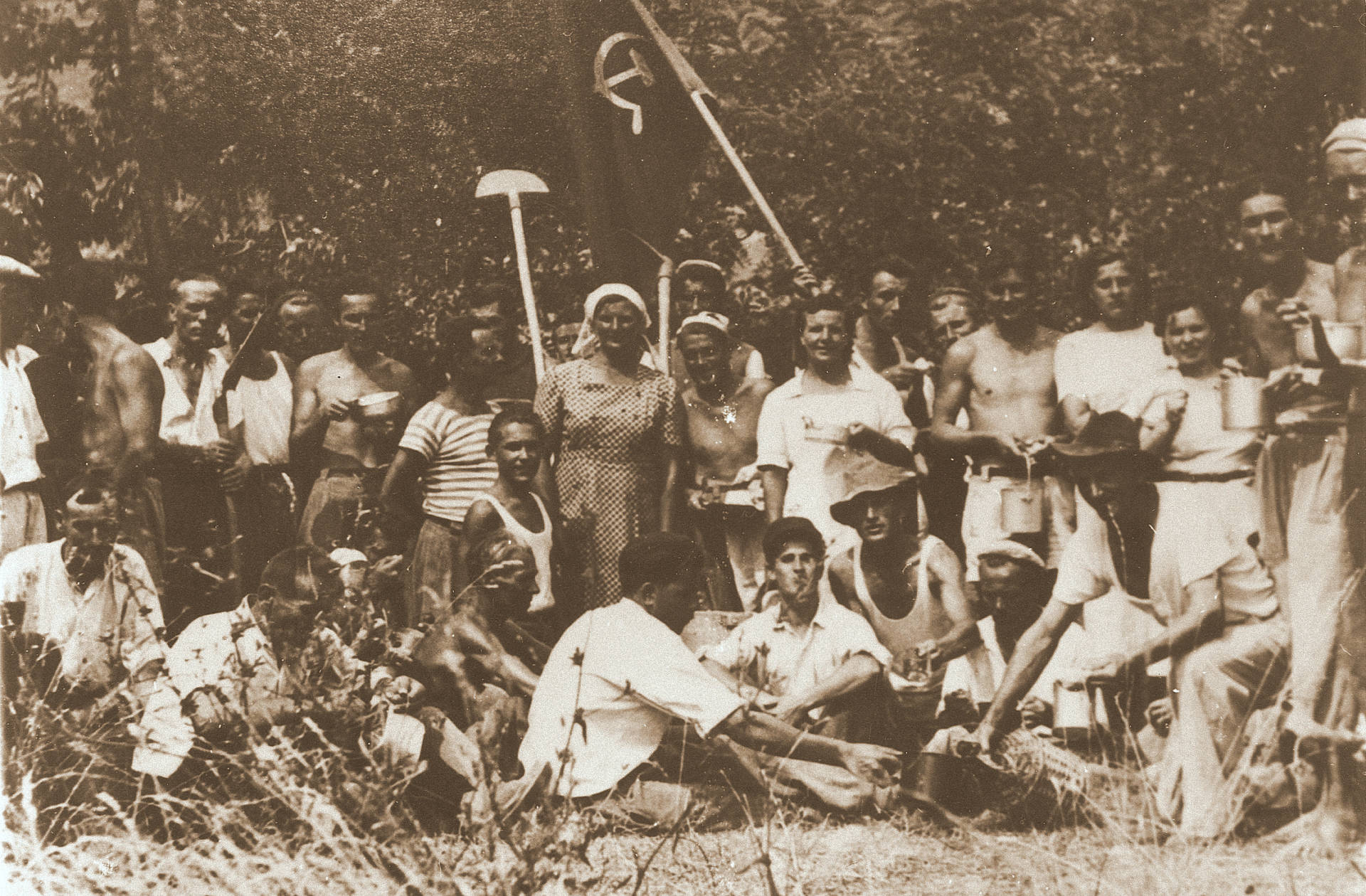


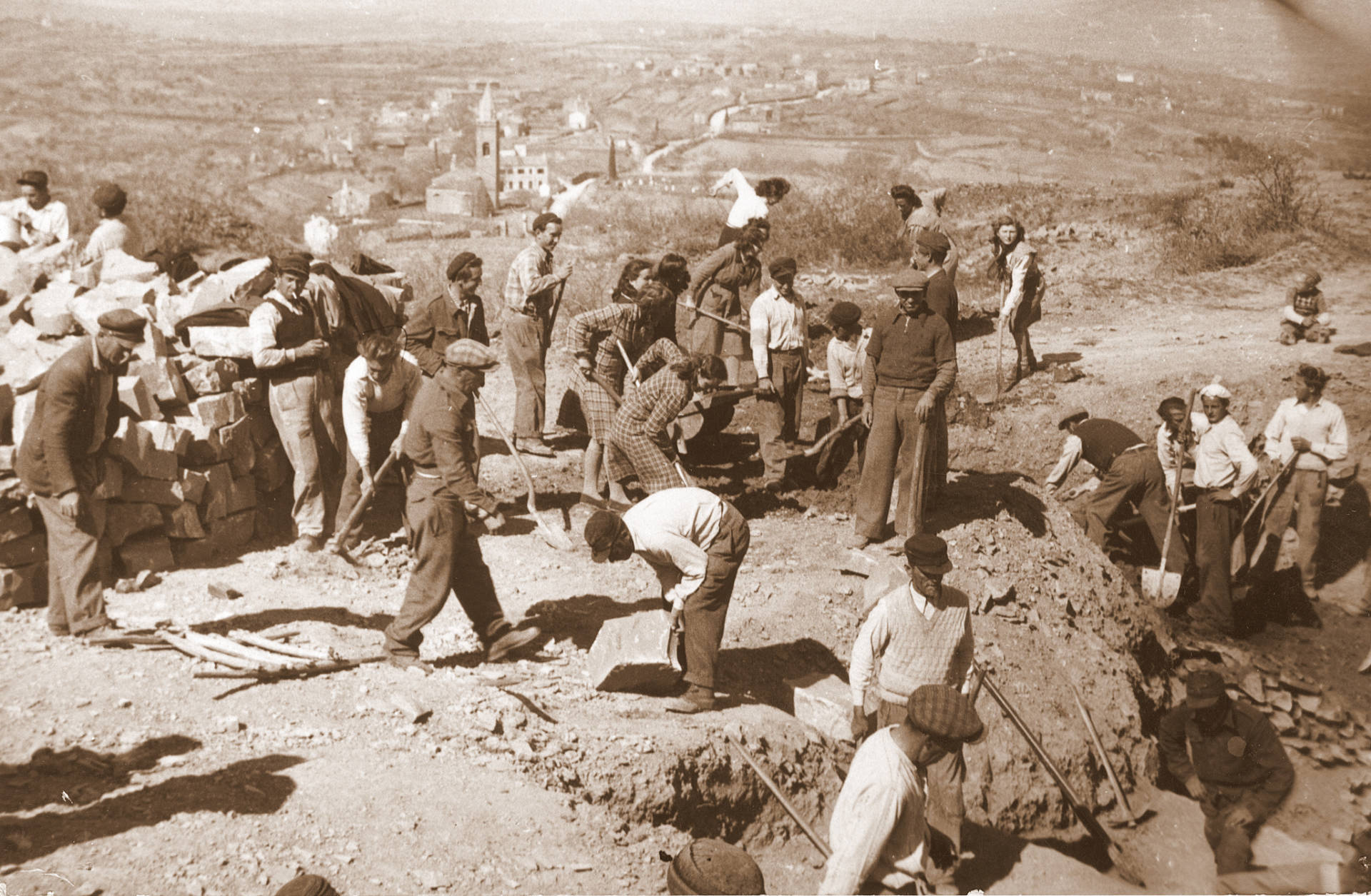 Sveti Anton – villagers clearing the land.
Sveti Anton – villagers clearing the land.
 Sečovlje, 1950 – rebuilding the bridge over the Dragonja.
Sečovlje, 1950 – rebuilding the bridge over the Dragonja.
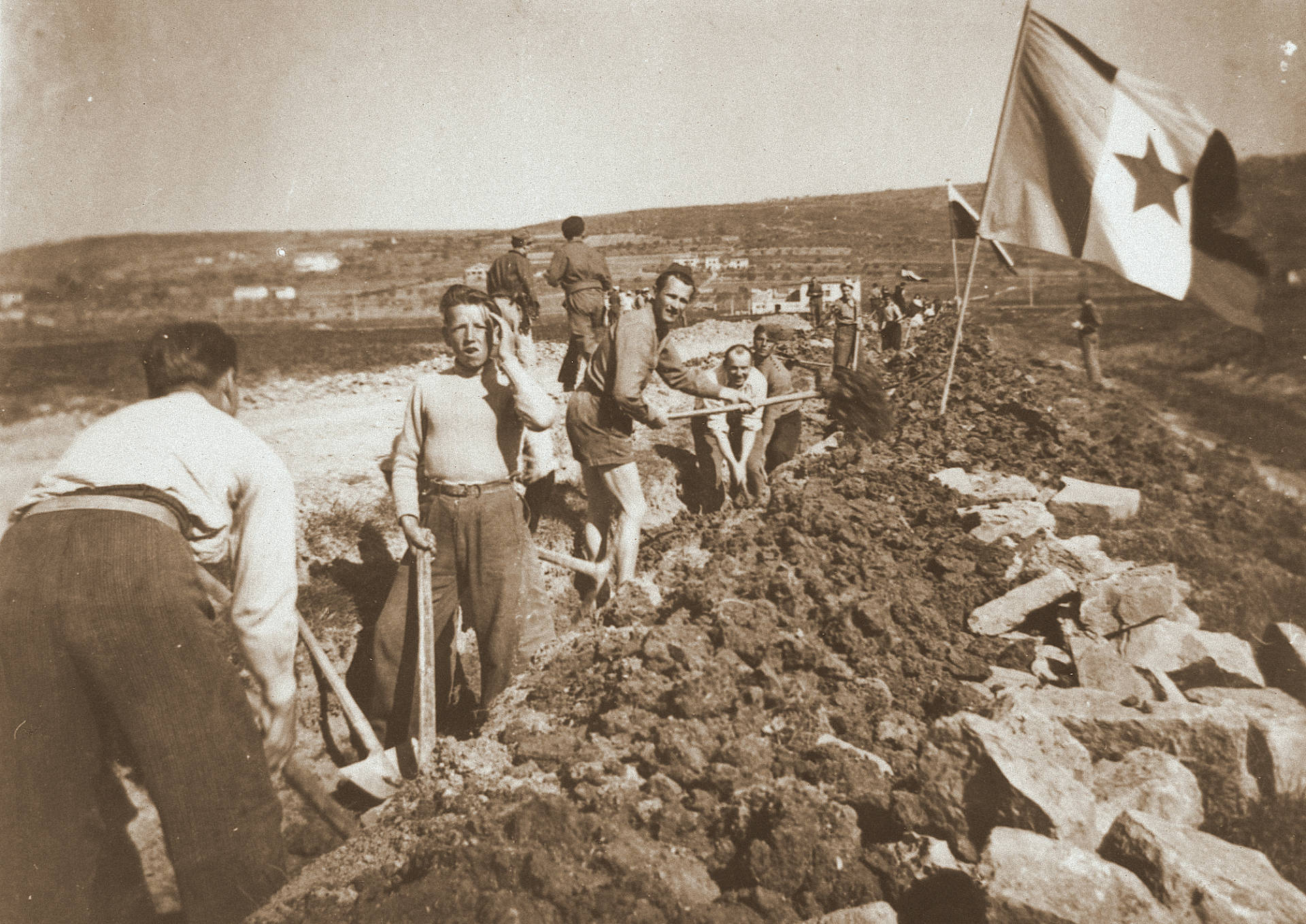 Ankaran – digging trenches for water pipes.
Ankaran – digging trenches for water pipes.
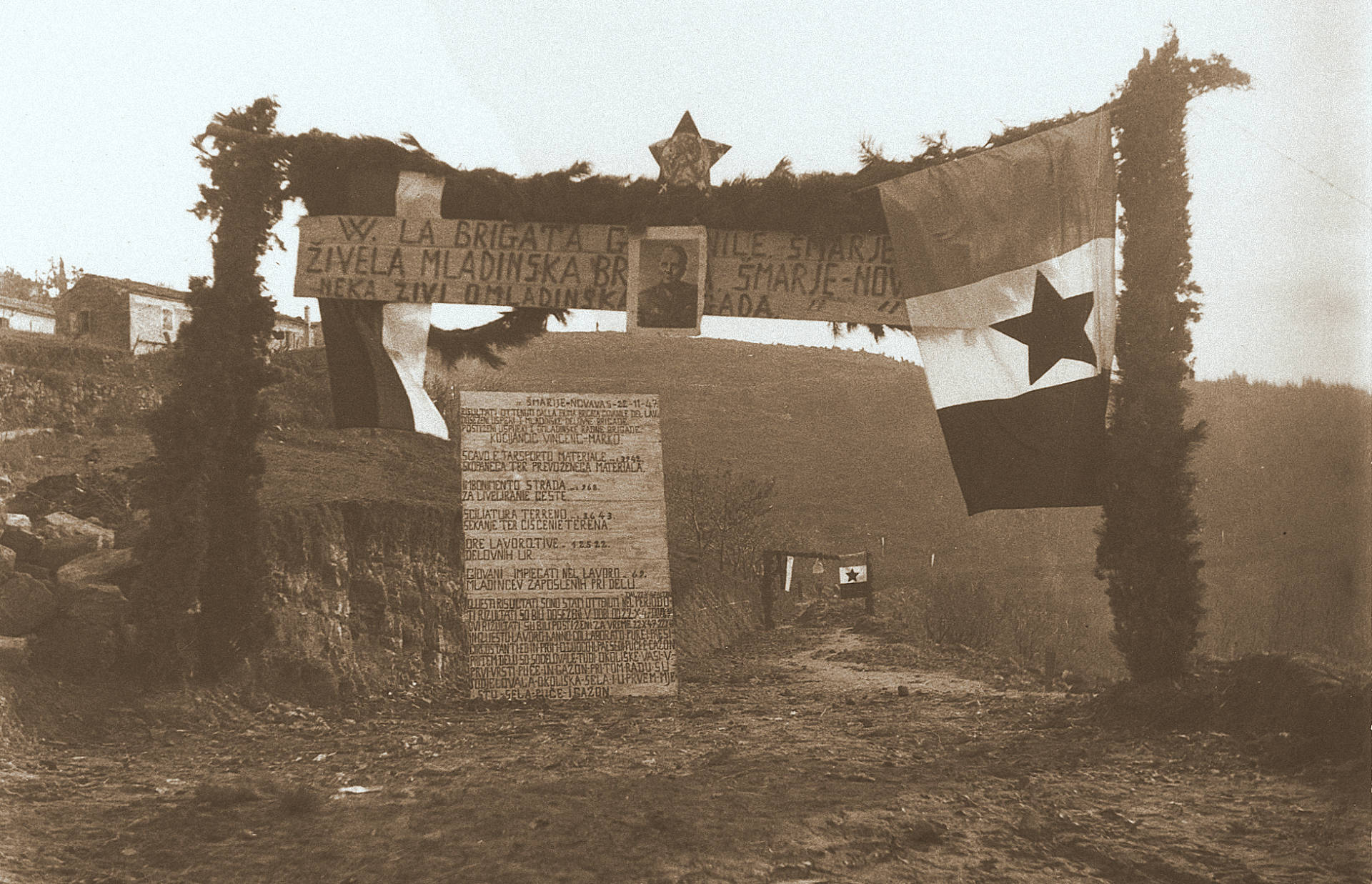 On 23 November 1947 a youth work campaign to build a road between Šmarje and Nova Vas was completed in Šmarje.
On 23 November 1947 a youth work campaign to build a road between Šmarje and Nova Vas was completed in Šmarje.
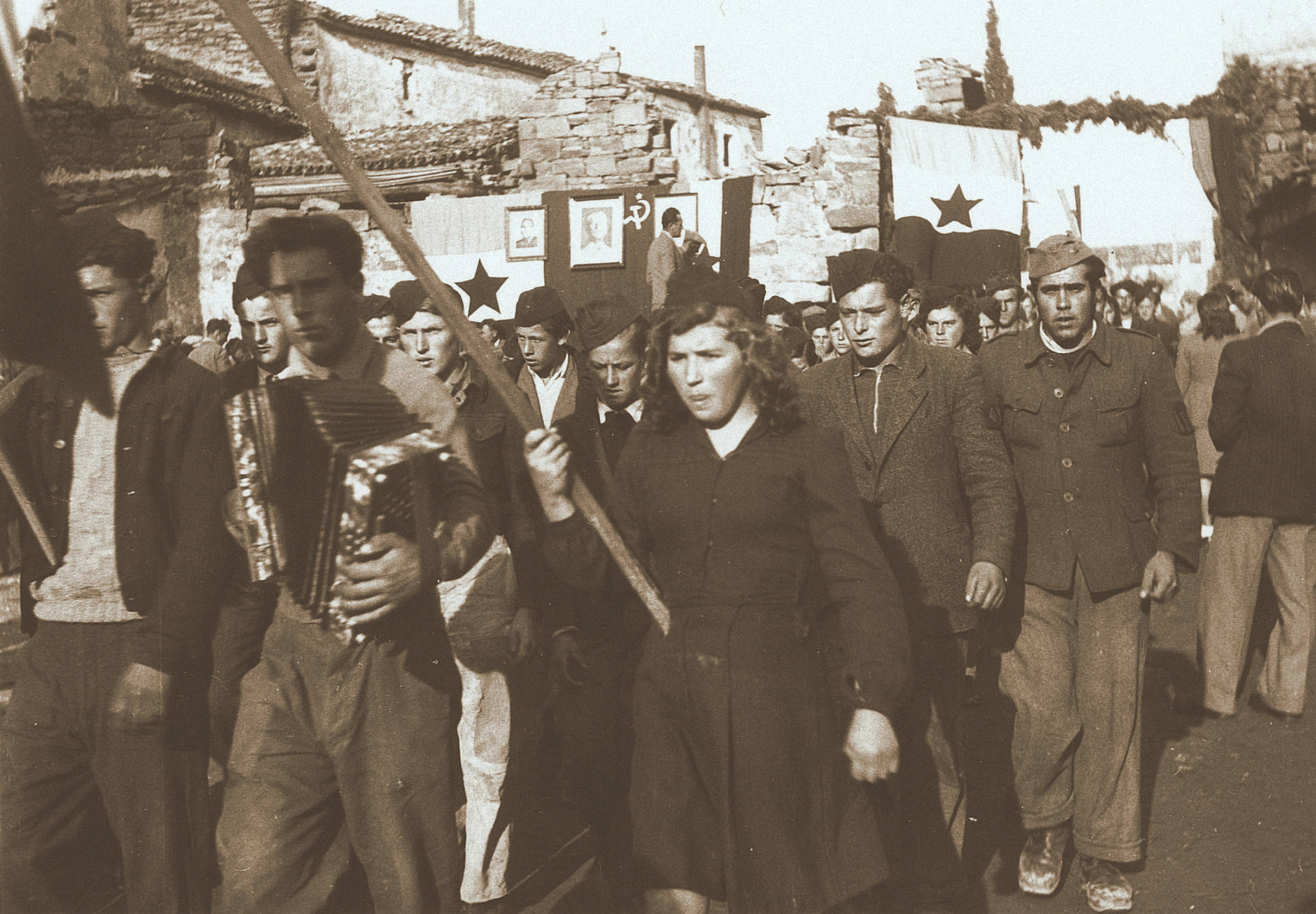 On 23 November 1947 a youth work campaign to build a road between Šmarje and Nova Vas was completed in Šmarje.
On 23 November 1947 a youth work campaign to build a road between Šmarje and Nova Vas was completed in Šmarje.
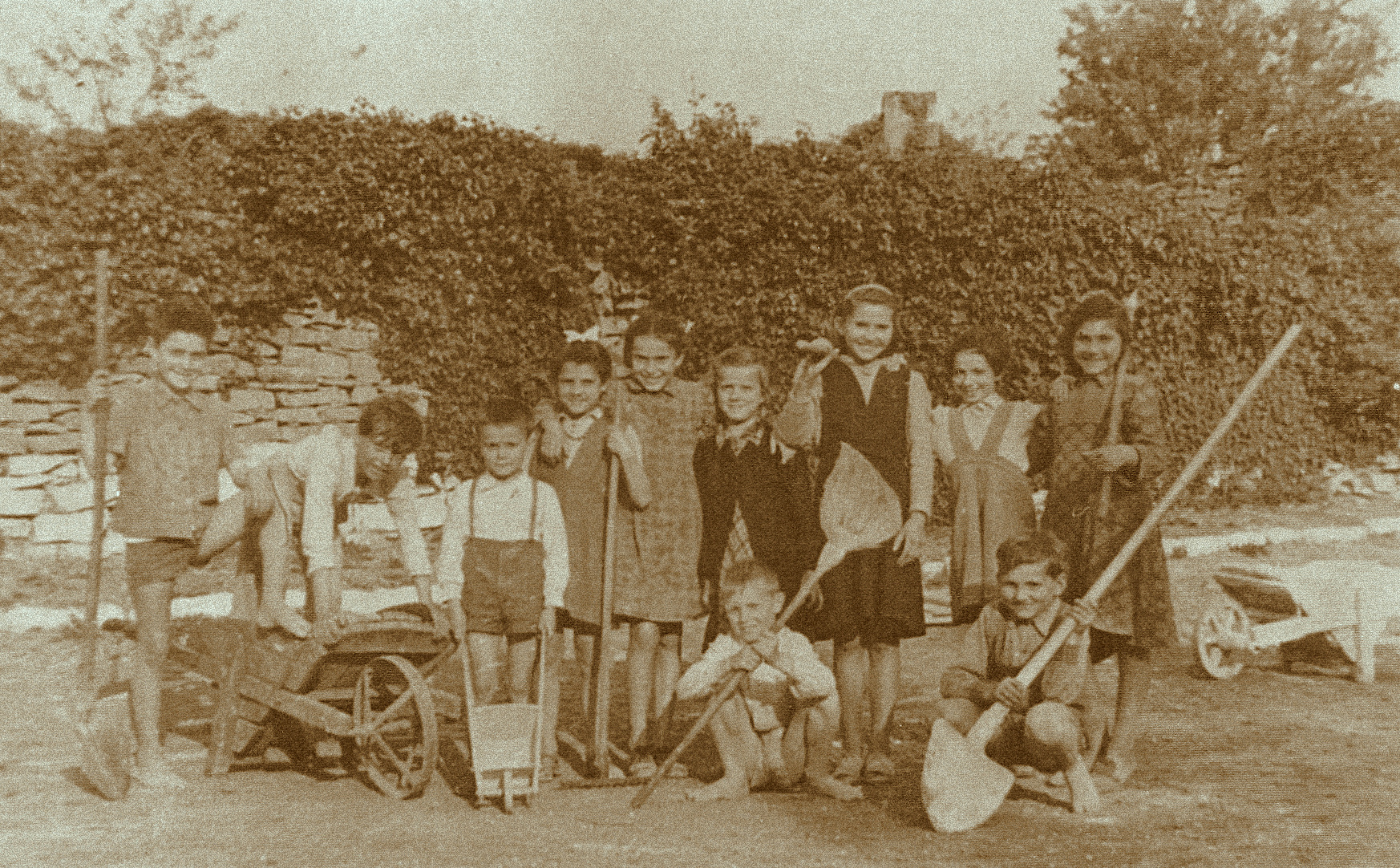 Dekani, 1951 – the Nebojsega work company on the construction site of the nursery school.
Dekani, 1951 – the Nebojsega work company on the construction site of the nursery school.
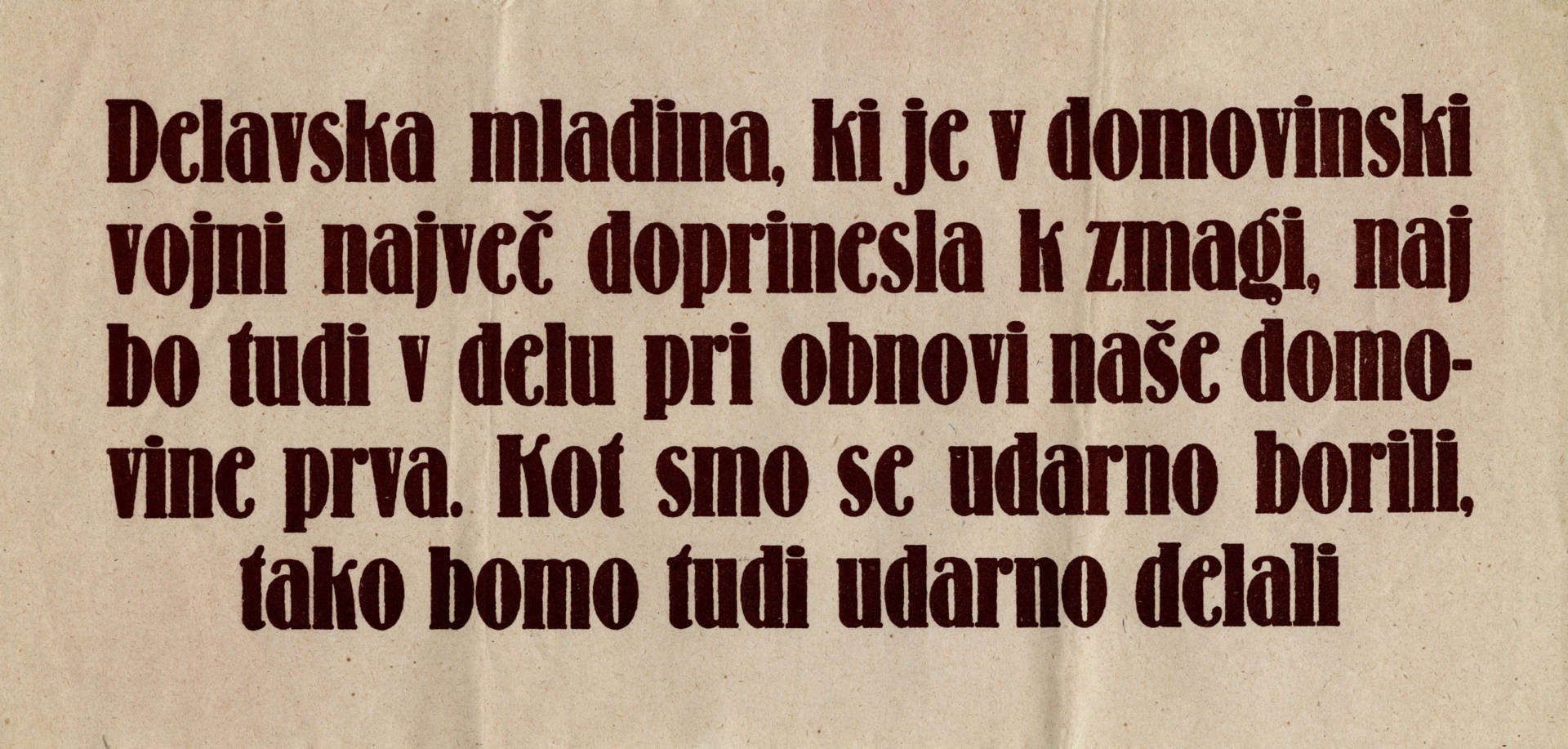
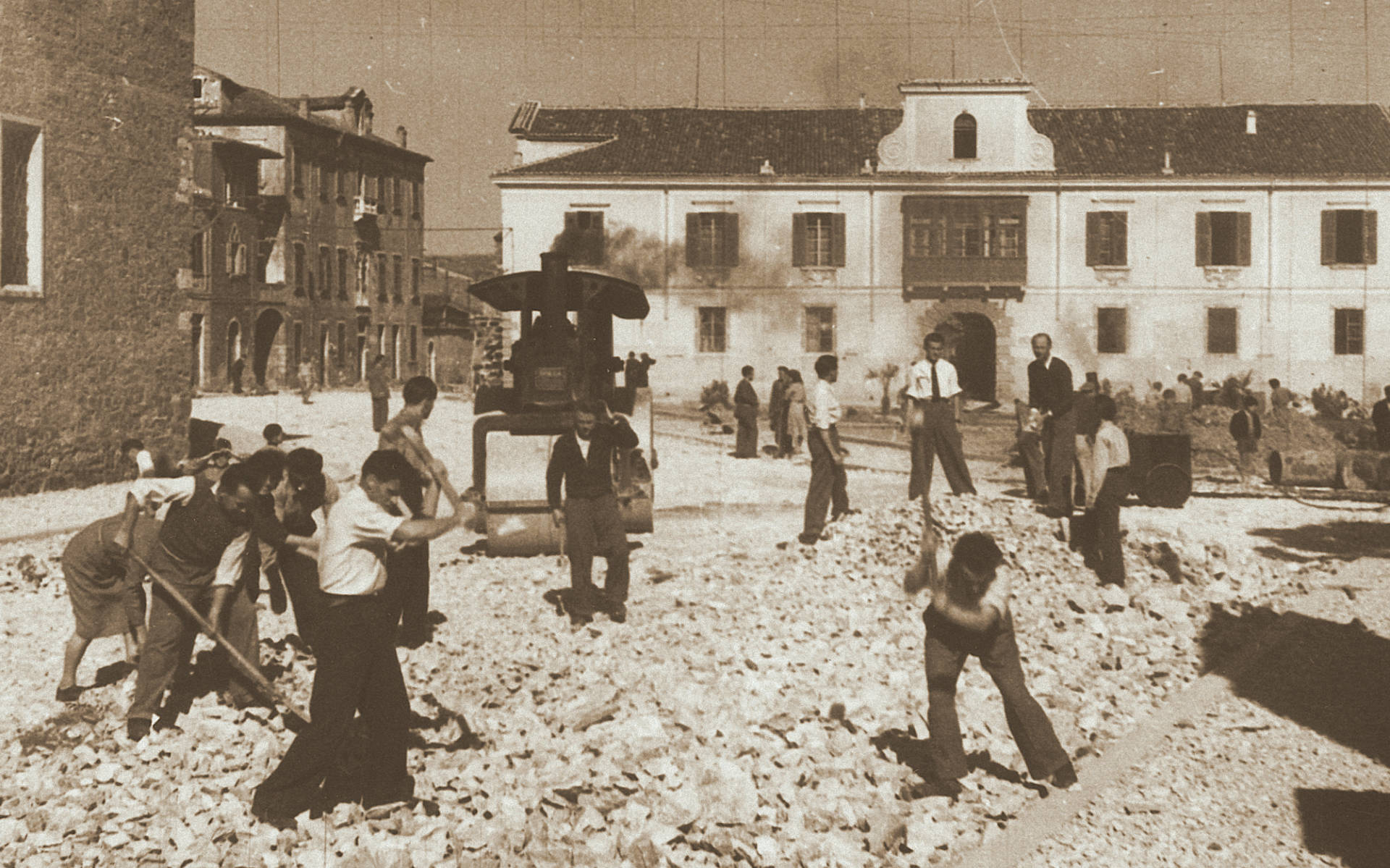 Koper, April 1950 – laying asphalt in Trg Brolo (“Brolo Square”).
Koper, April 1950 – laying asphalt in Trg Brolo (“Brolo Square”).
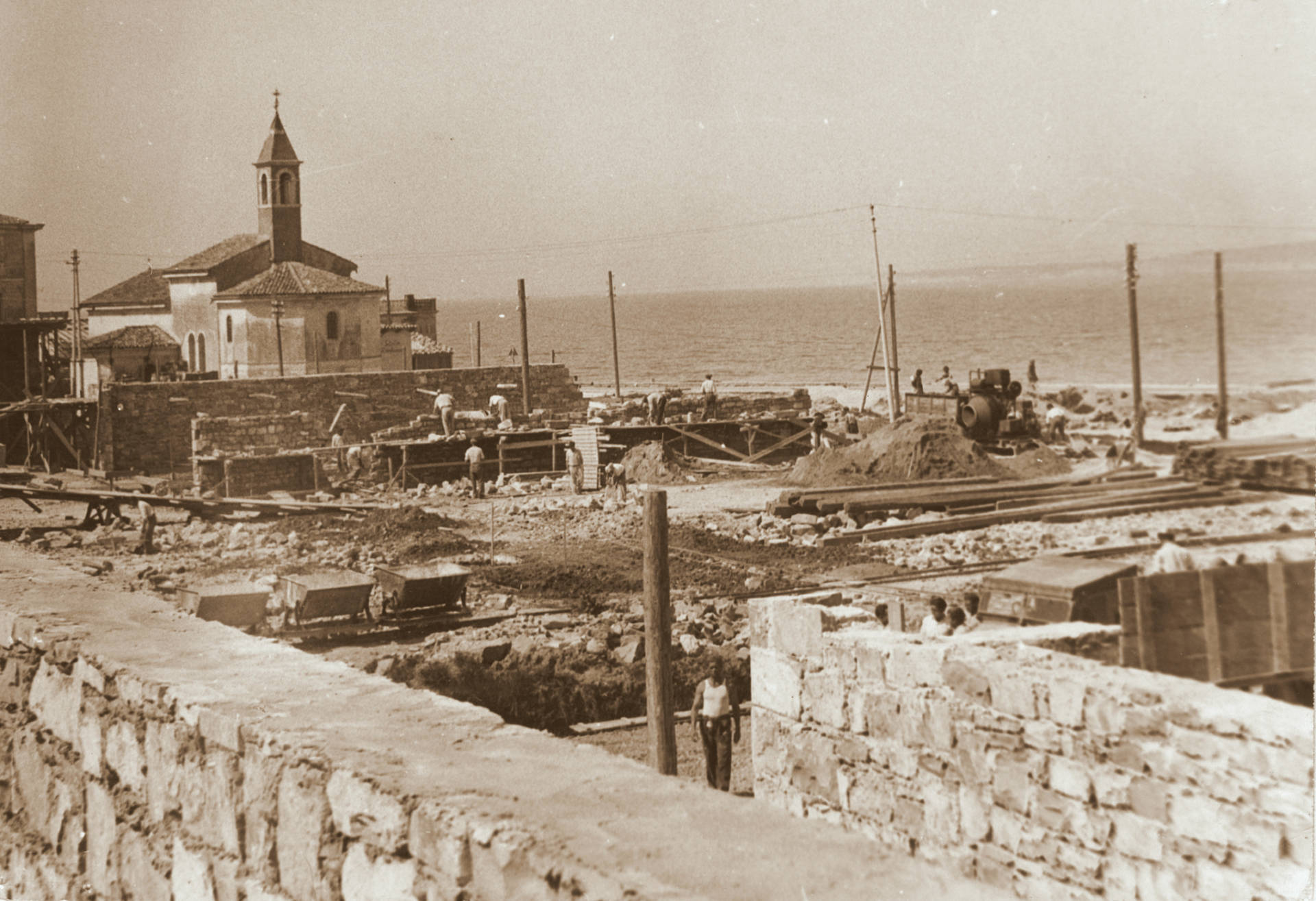 Semedela, 1950 – construction of the Slavnik bus garages.
Semedela, 1950 – construction of the Slavnik bus garages.
 Koper, 1950 – young Slovenes from Trieste help build the stadium.
Koper, 1950 – young Slovenes from Trieste help build the stadium.
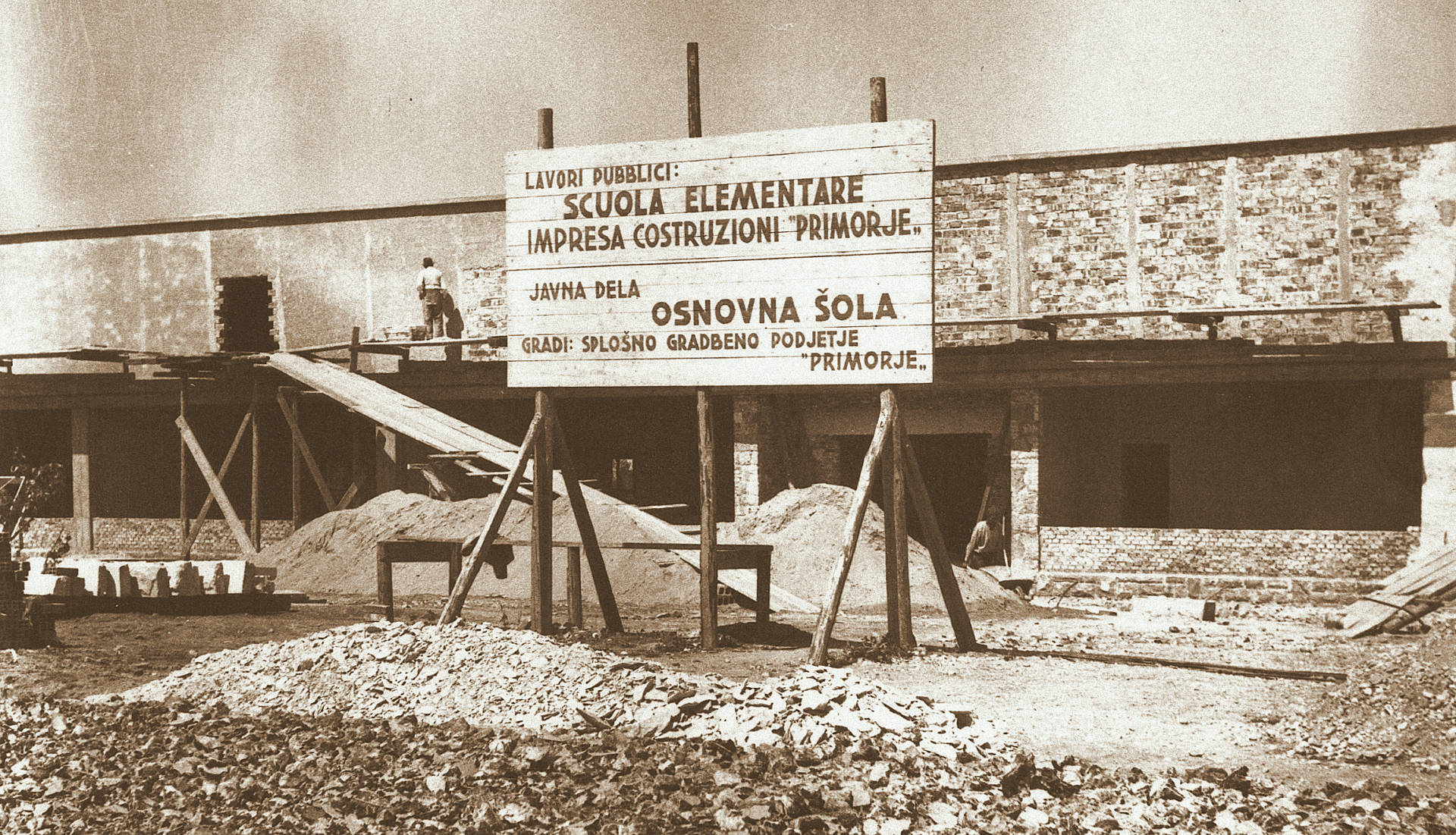 Izola, 1948 – construction of a Slovene primary school.
Izola, 1948 – construction of a Slovene primary school.
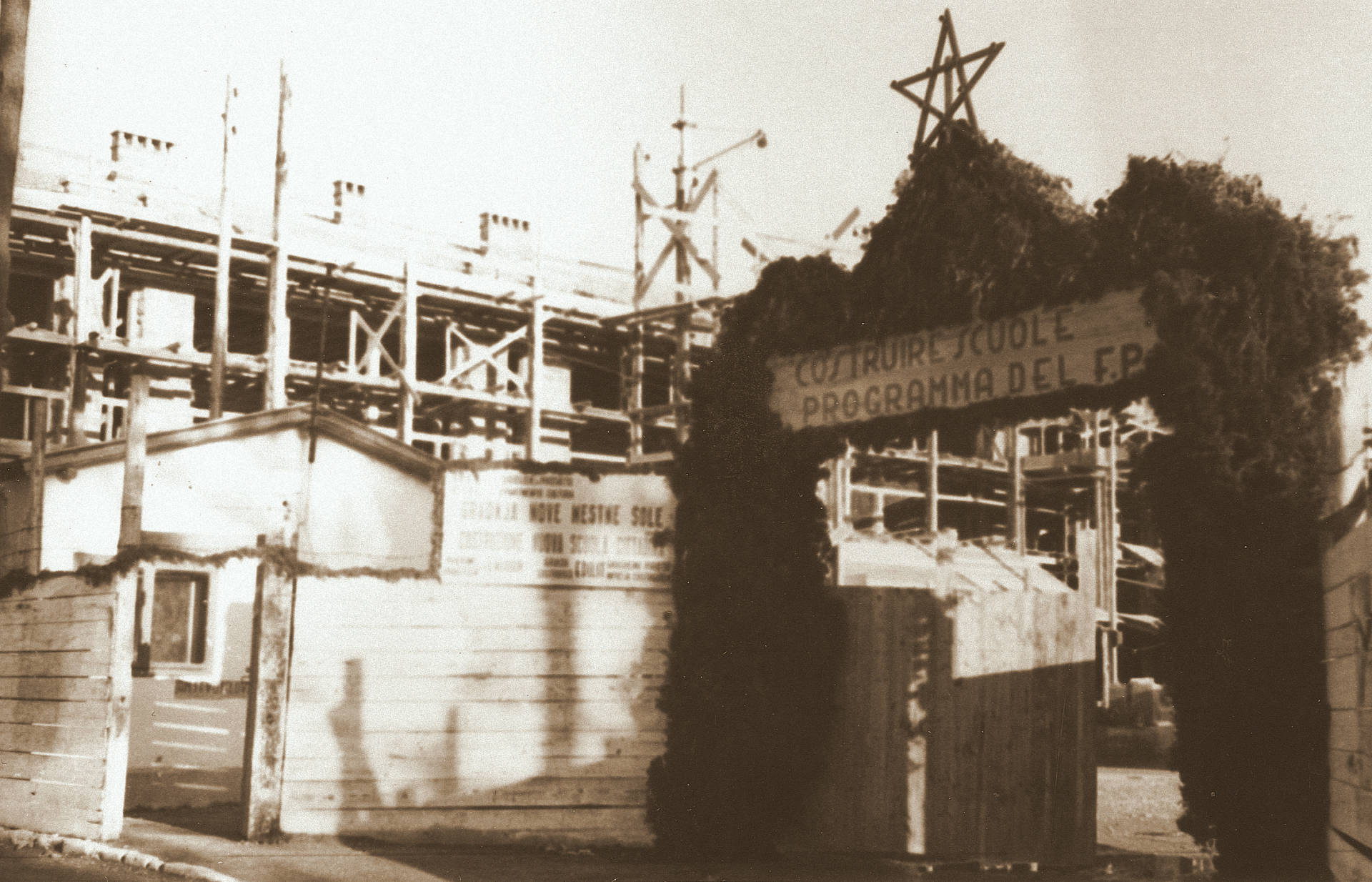 Koper, 1950 – a Slovene-Italian primary school being built on the site of Koper’s former prison.
Koper, 1950 – a Slovene-Italian primary school being built on the site of Koper’s former prison.
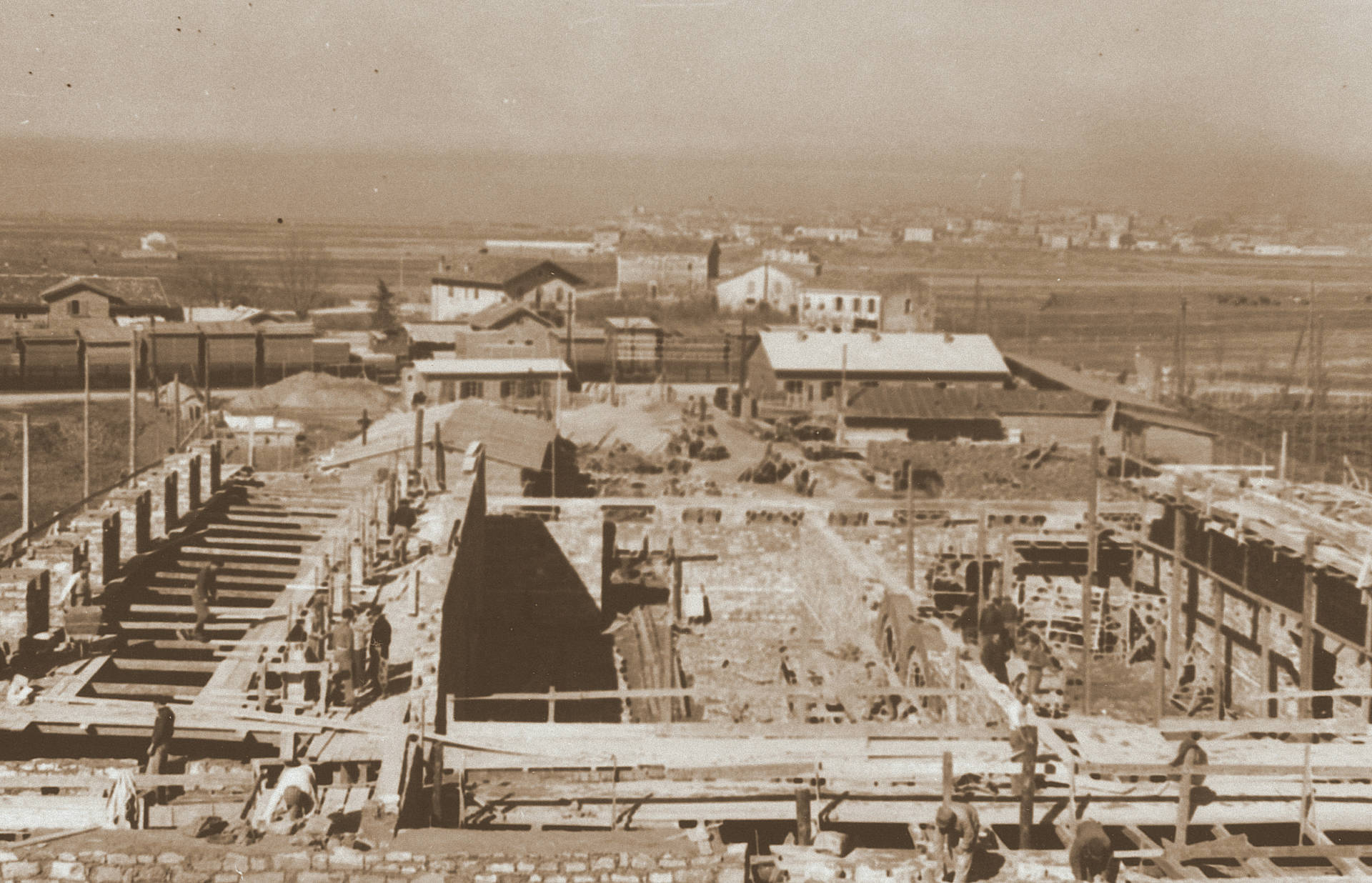 Škocjan, February 1950 – construction of the present-day Vinakoper winery began in 1949.
Škocjan, February 1950 – construction of the present-day Vinakoper winery began in 1949.
 Construction of the Šmarje–Nova Vas road in November 1947.
Construction of the Šmarje–Nova Vas road in November 1947.
 Construction of the Šmarje–Nova Vas road in November 1947.
Construction of the Šmarje–Nova Vas road in November 1947.
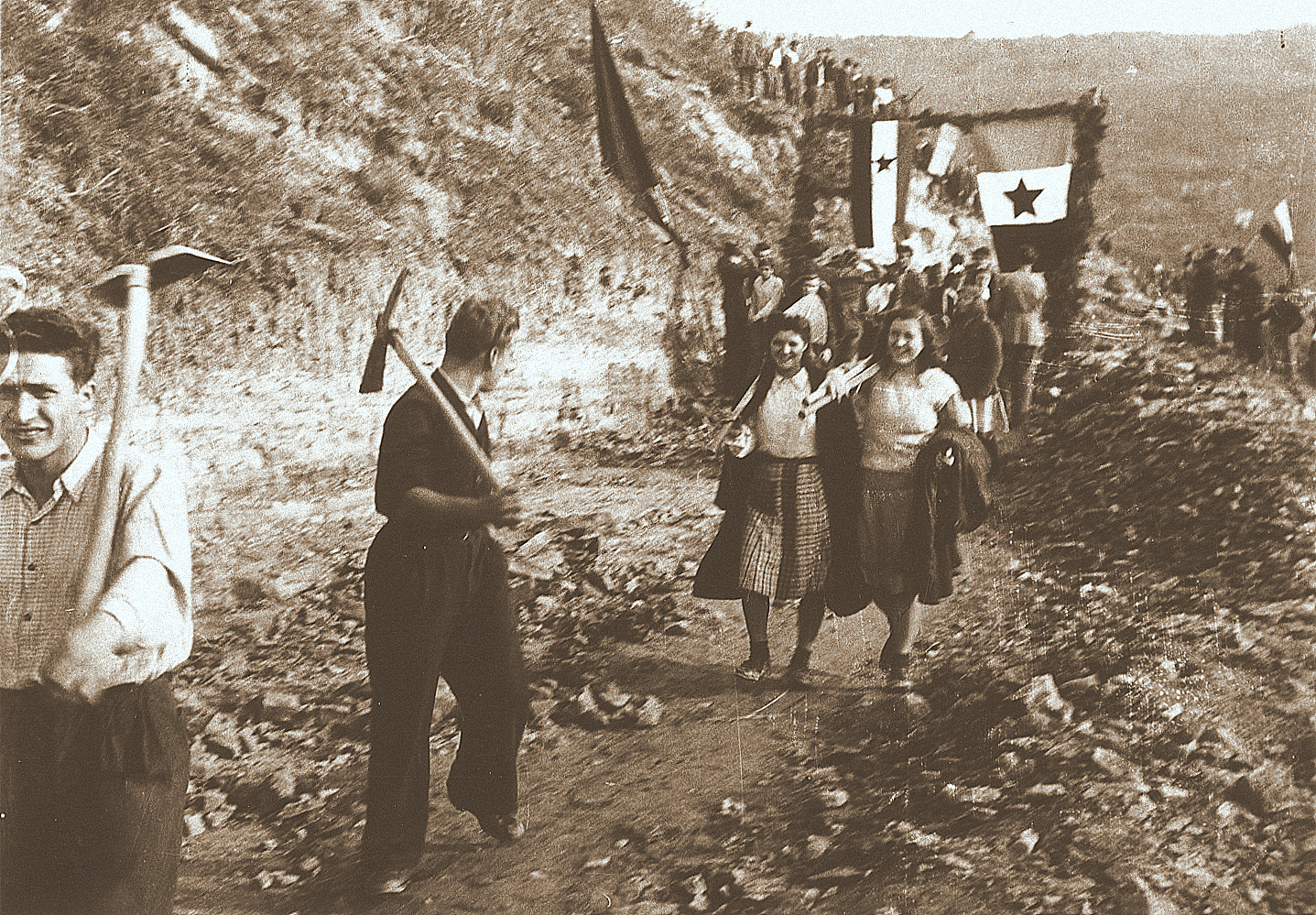 Construction of the Šmarje–Nova Vas road in November 1947.
Construction of the Šmarje–Nova Vas road in November 1947.
 The road to Boršt was built in 1953.
The road to Boršt was built in 1953.
 The road to Boršt was built in 1953.
The road to Boršt was built in 1953.
 The road to Boršt was built in 1953.
The road to Boršt was built in 1953.
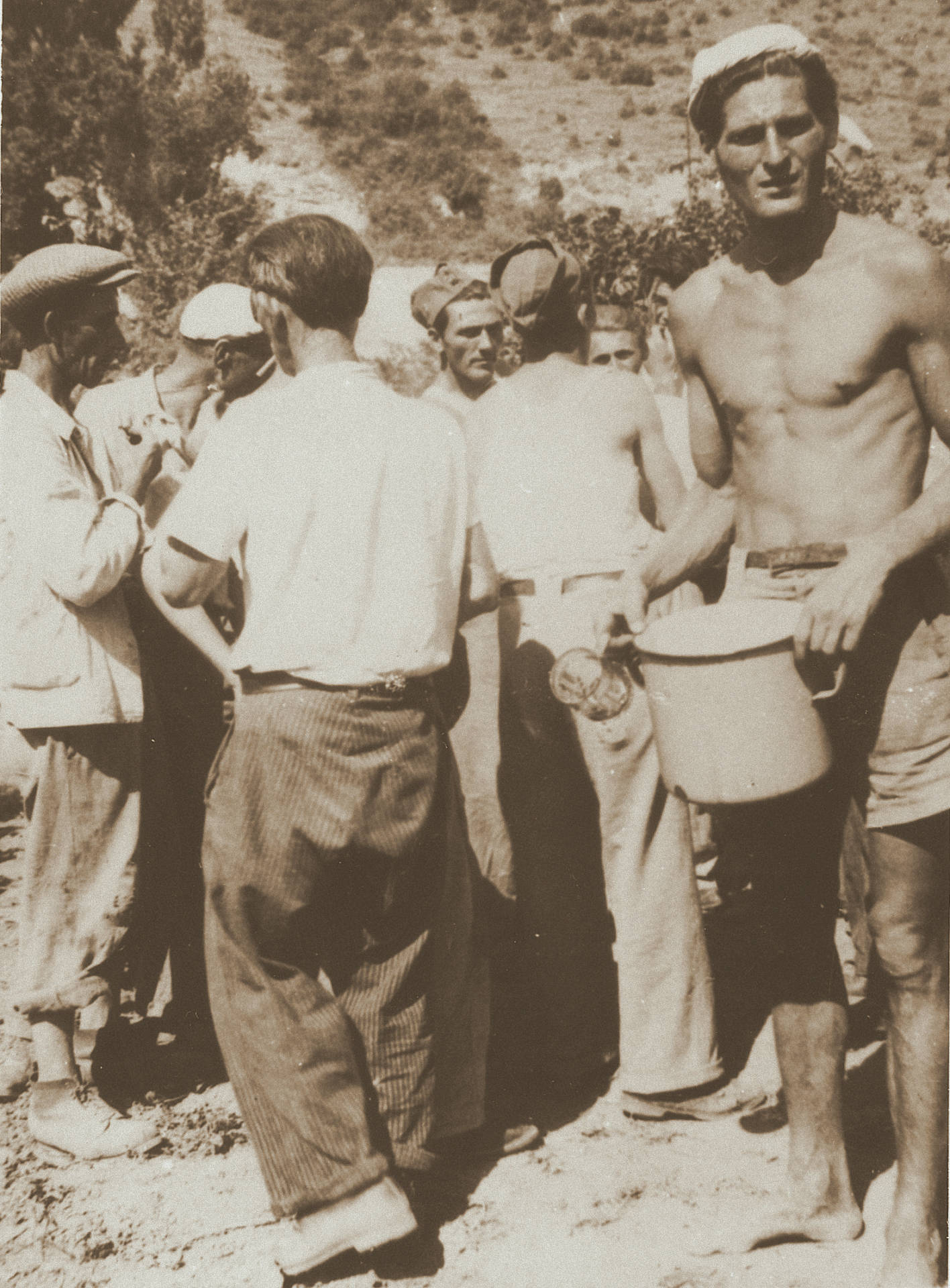 Construction of the road from the Ankaran crossroads to Rižana in 1950.
Construction of the road from the Ankaran crossroads to Rižana in 1950.
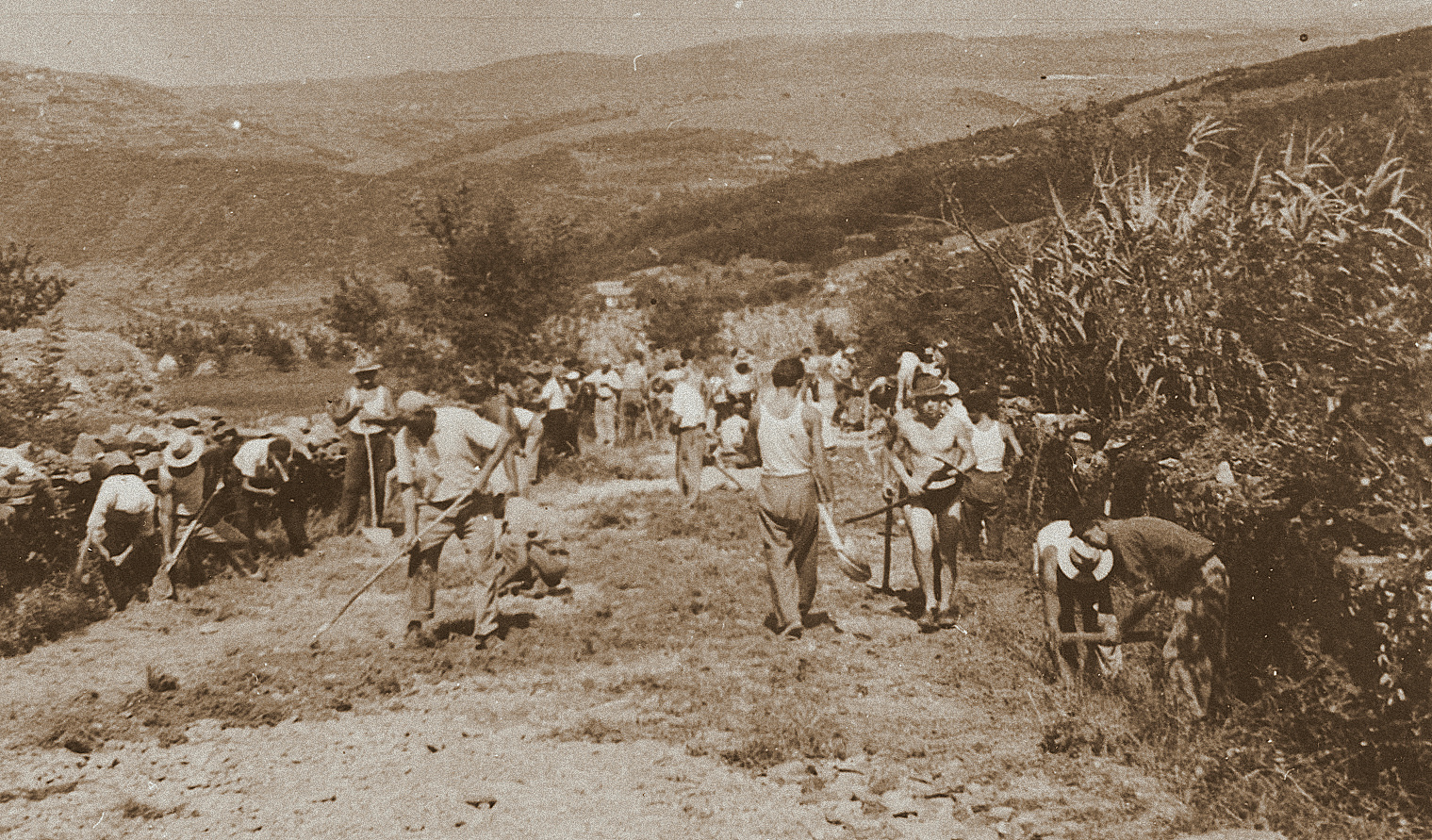 Construction of the Rižana–Črni Kal road in 1954.
Construction of the Rižana–Črni Kal road in 1954.
 Construction of the Rižana–Črni Kal road in 1954.
Construction of the Rižana–Črni Kal road in 1954.

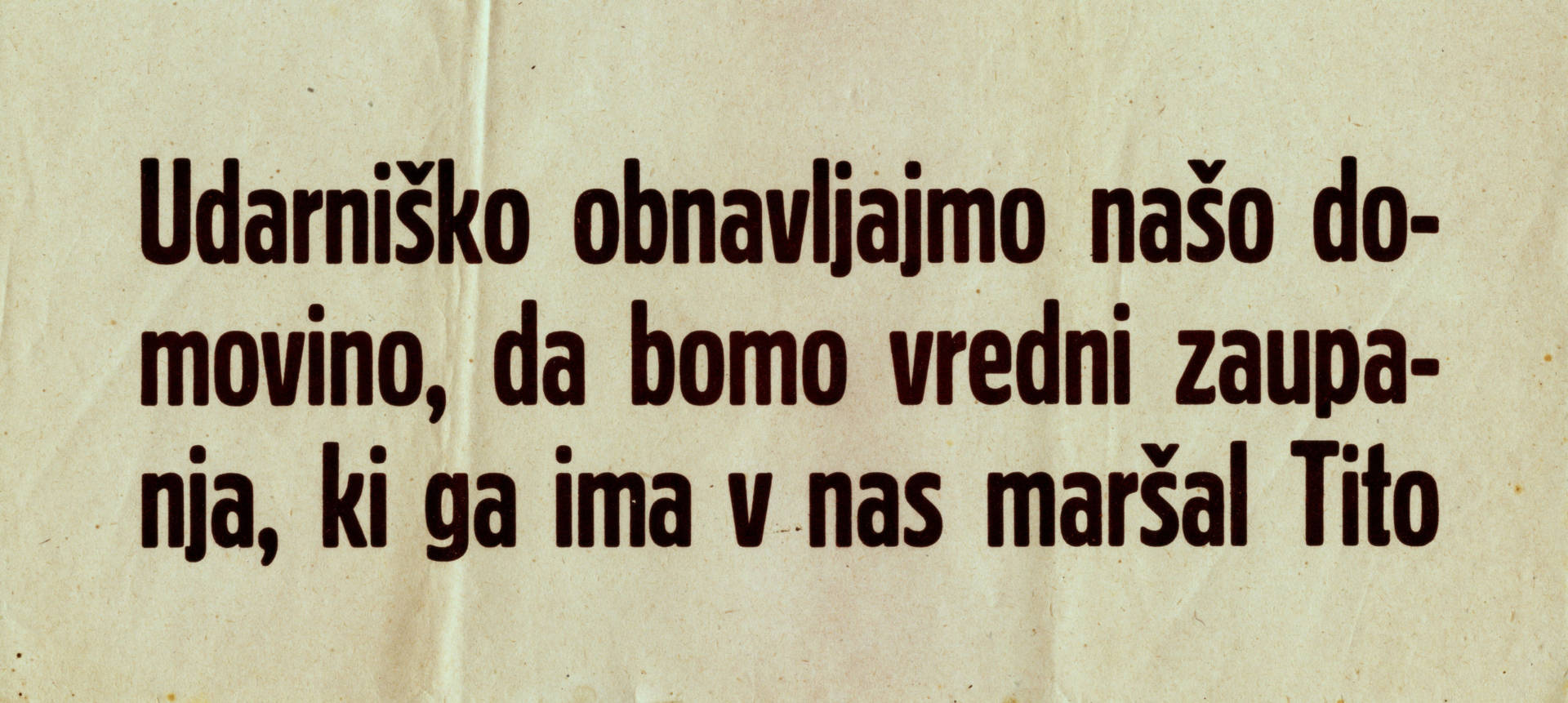

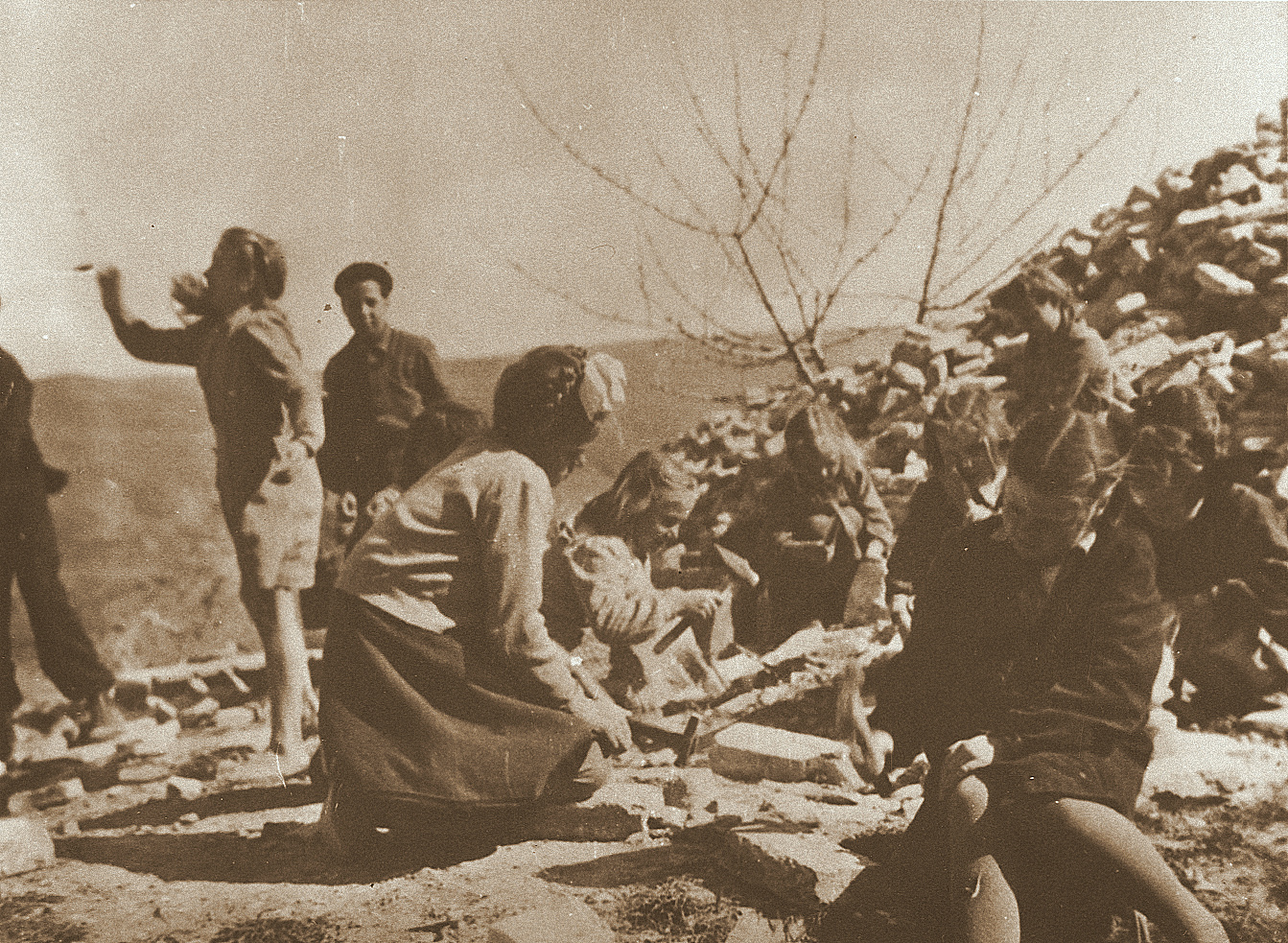 Pobegi-Čežarji – youngsters clearing the land for the construction of the cooperative building.
Pobegi-Čežarji – youngsters clearing the land for the construction of the cooperative building.
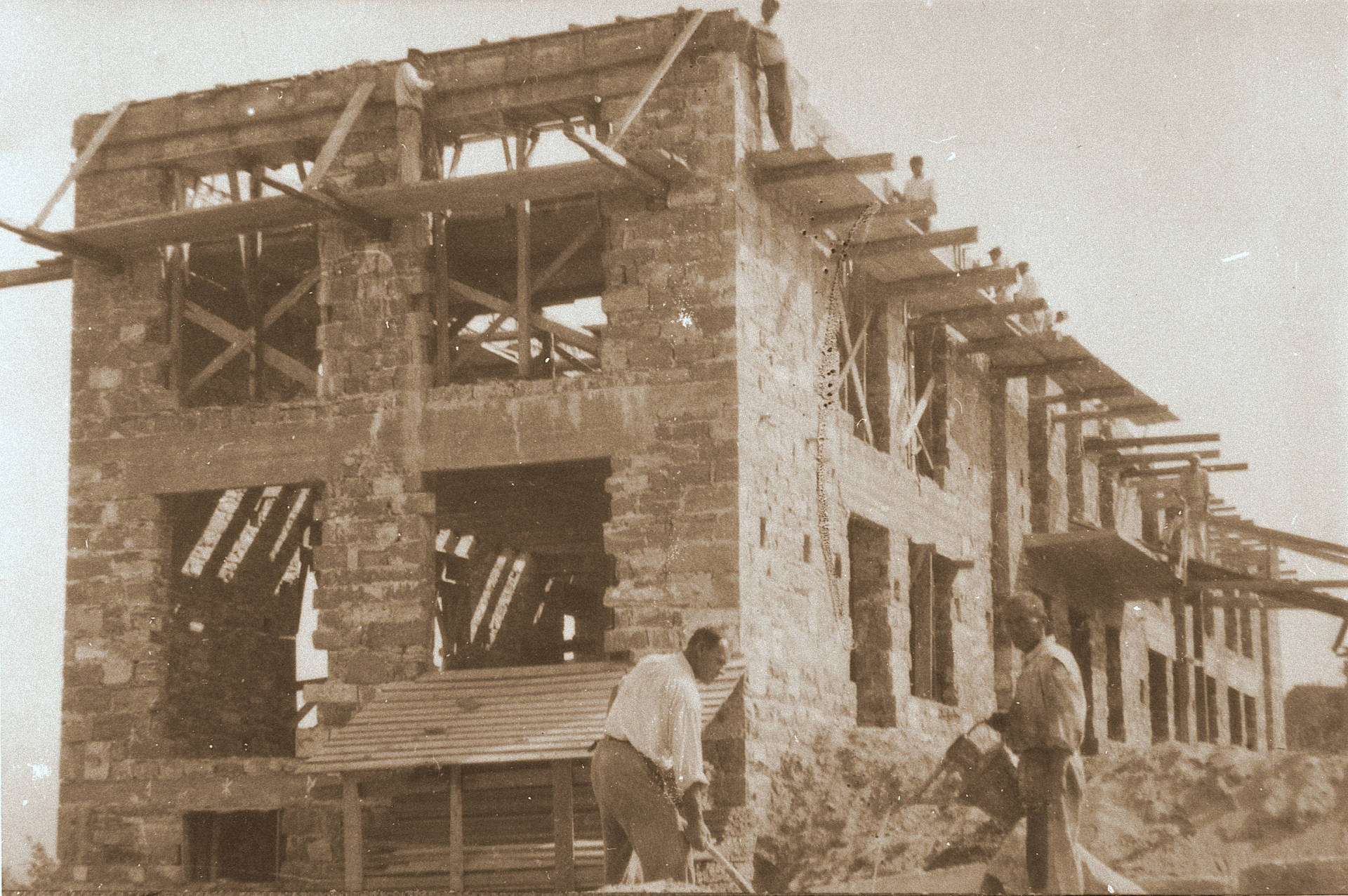 Pobegi-Čežarji – the cooperative building in 1949.
Pobegi-Čežarji – the cooperative building in 1949.
 Sveti Anton – construction of the cooperative building began in 1949.
Sveti Anton – construction of the cooperative building began in 1949.
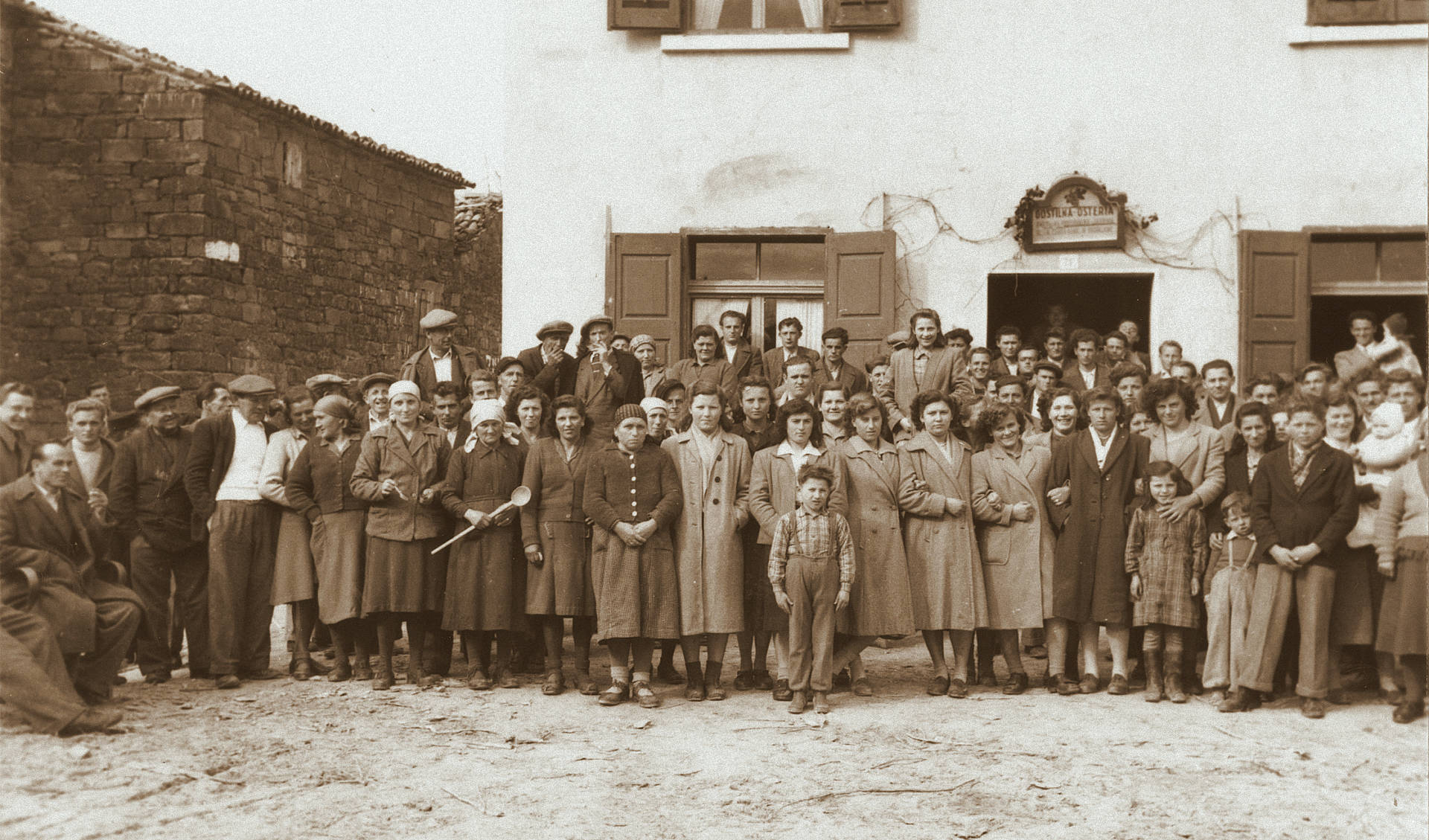 Opening of the cooperative building in Sveti Anton in 1951.
Opening of the cooperative building in Sveti Anton in 1951.
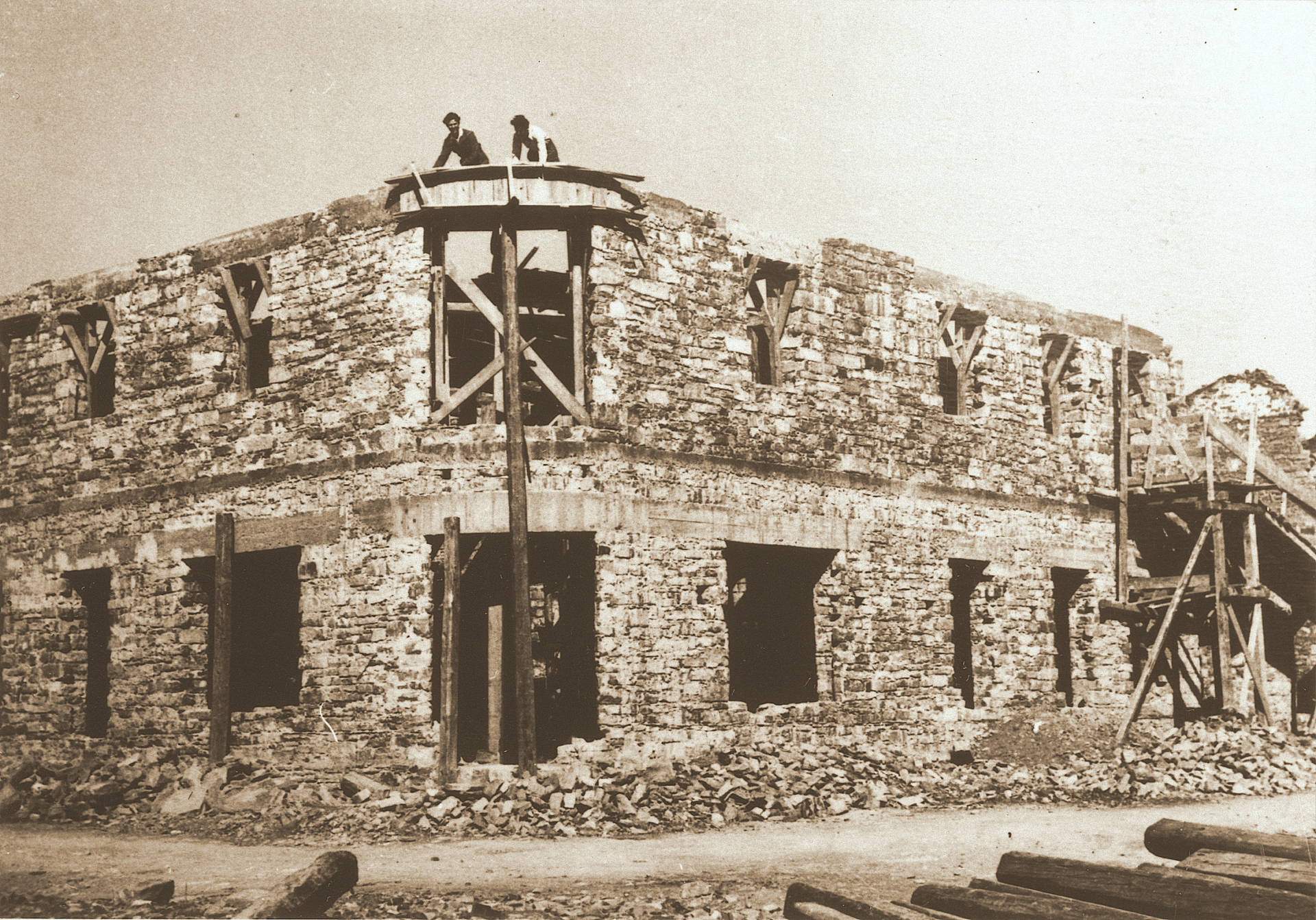 Šmarje – construction of the cooperative building began in 1948.
Šmarje – construction of the cooperative building began in 1948.
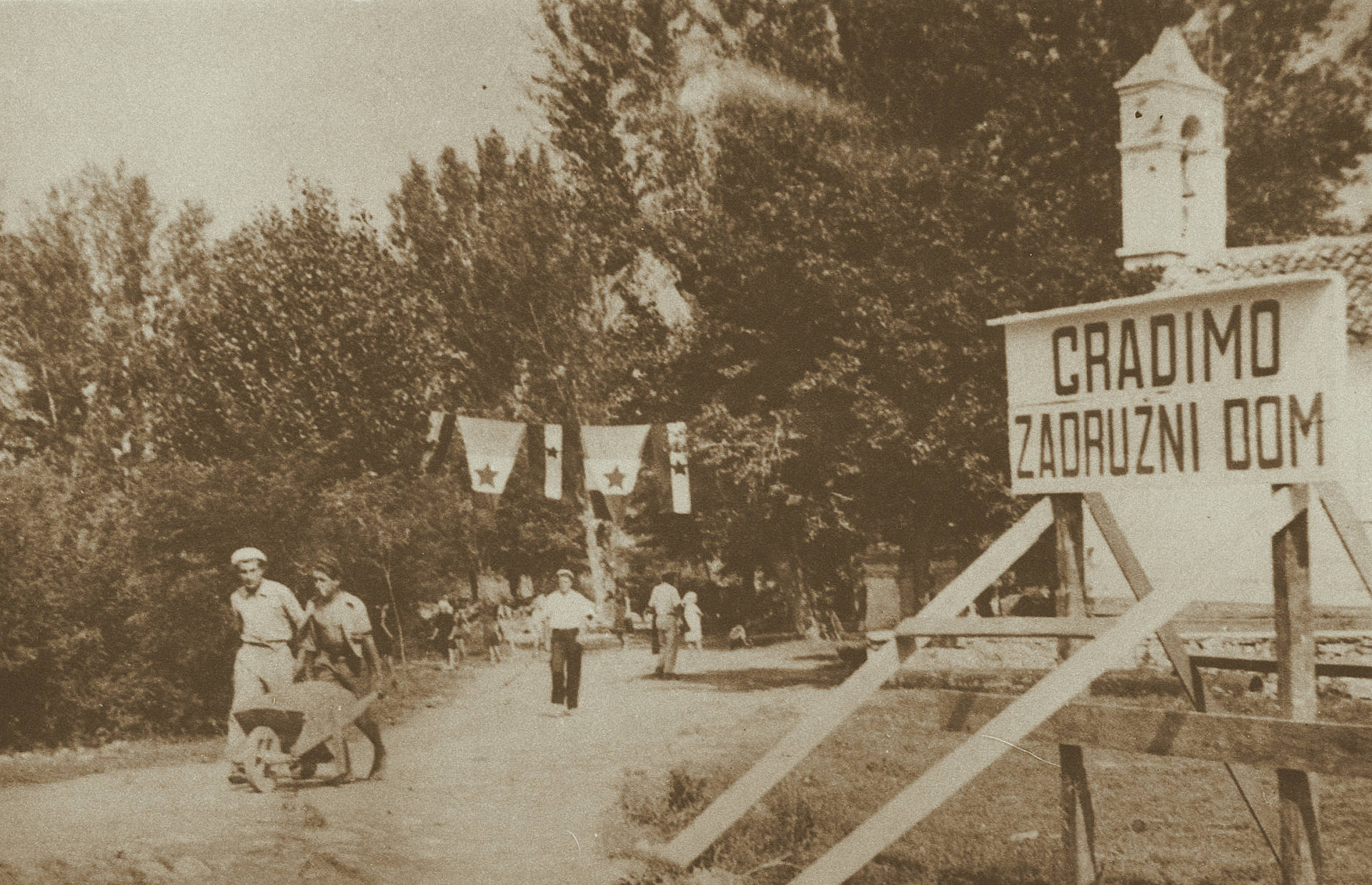 Vanganel, 1949 – construction of the cooperative building.
Vanganel, 1949 – construction of the cooperative building.
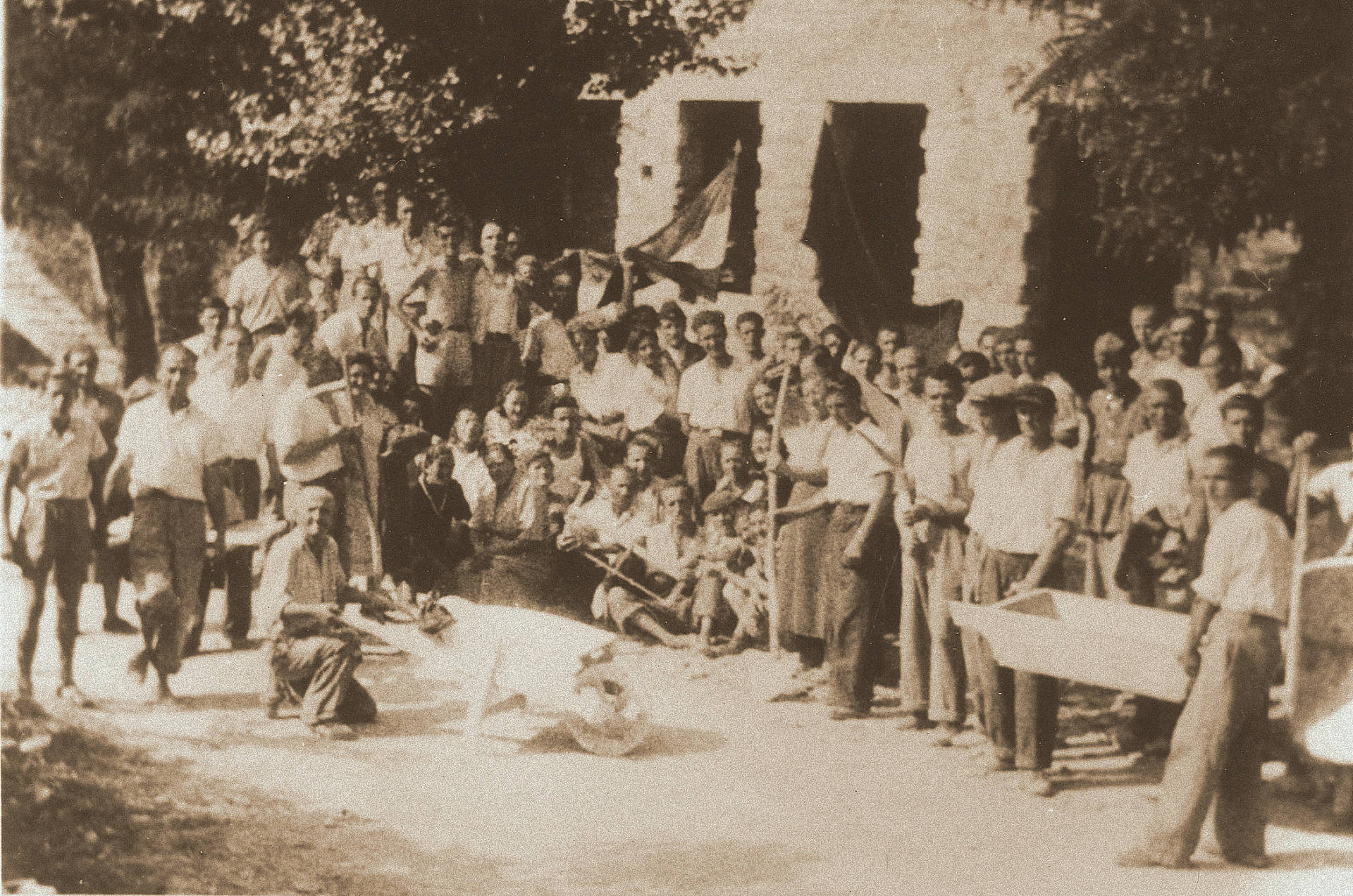 Vanganel, 1949 – construction of the cooperative building.
Vanganel, 1949 – construction of the cooperative building.
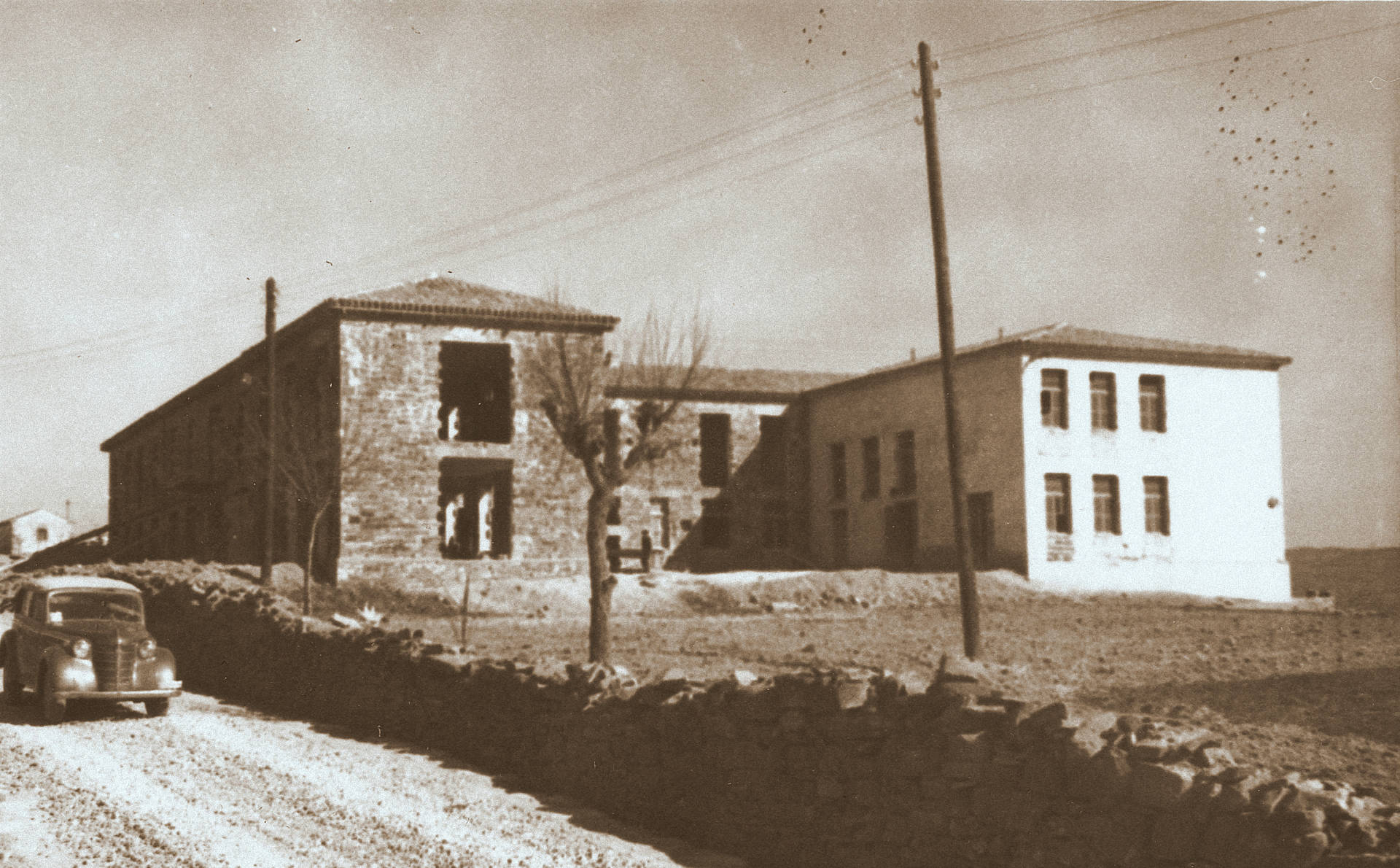 The cooperative building in Marezige already has a roof.
The cooperative building in Marezige already has a roof.
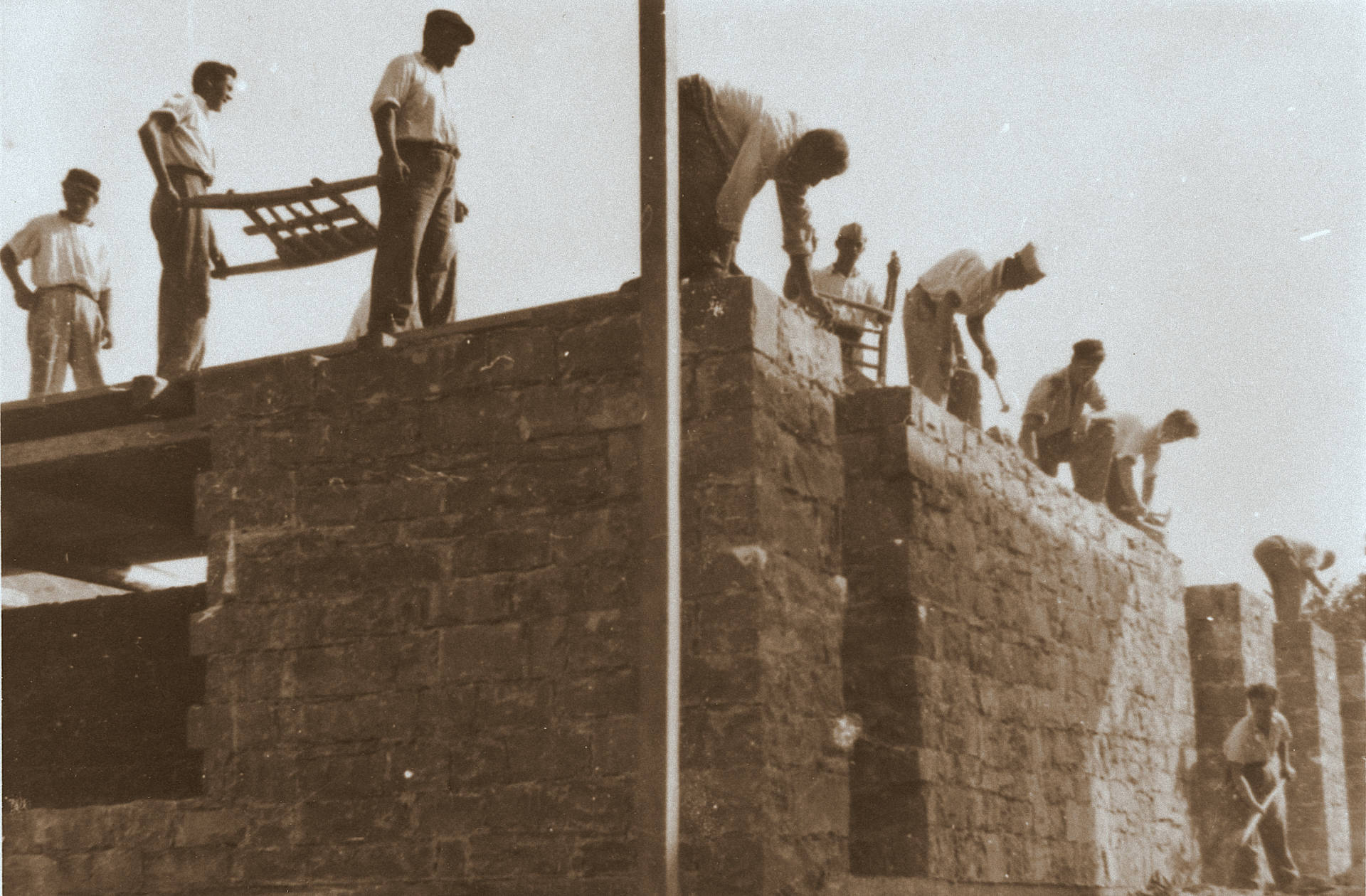 Dekani – construction of the cooperative building began in 1948.
Dekani – construction of the cooperative building began in 1948.
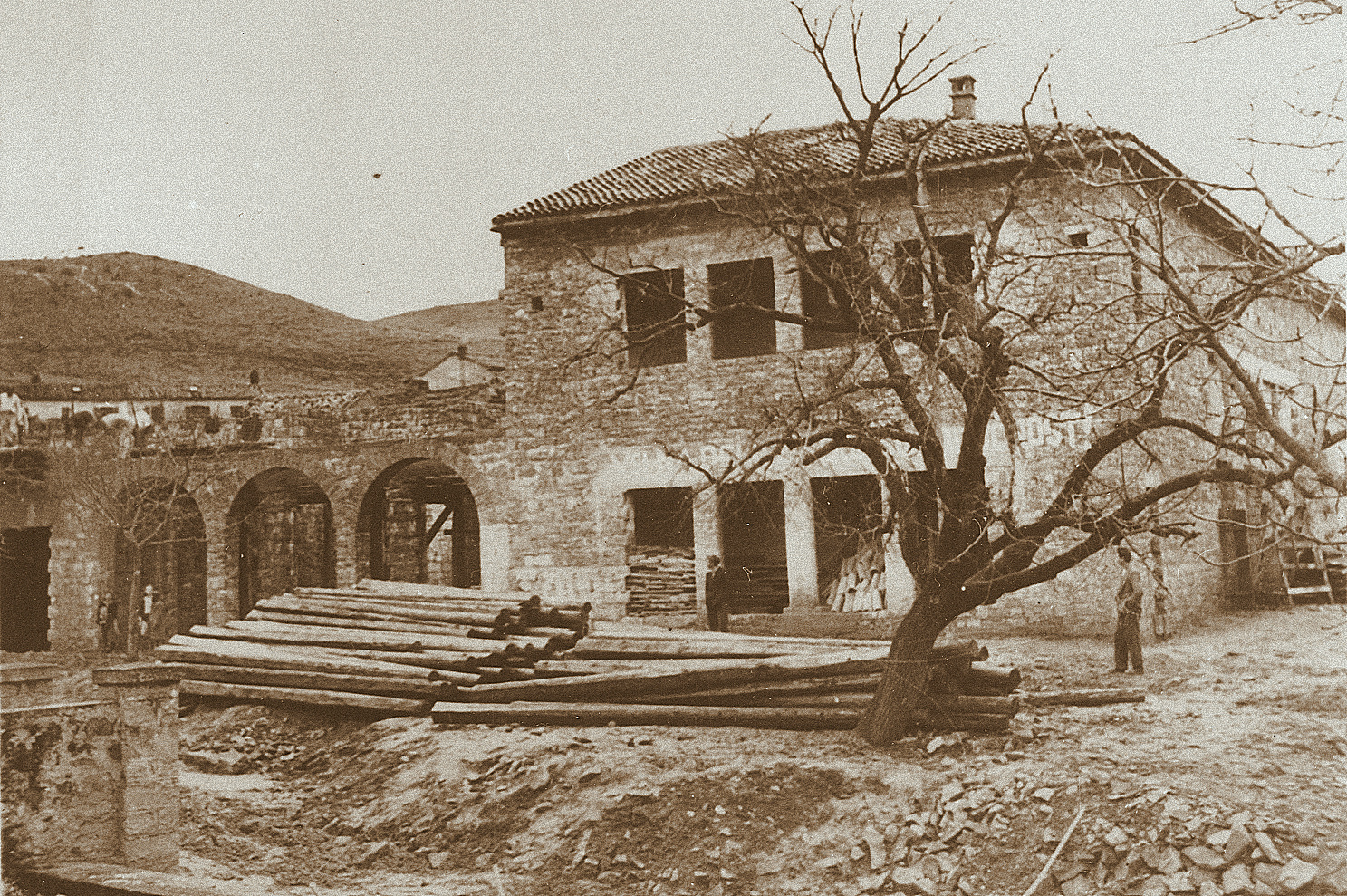 Dekani – construction of the cooperative building began in 1948.
Dekani – construction of the cooperative building began in 1948.
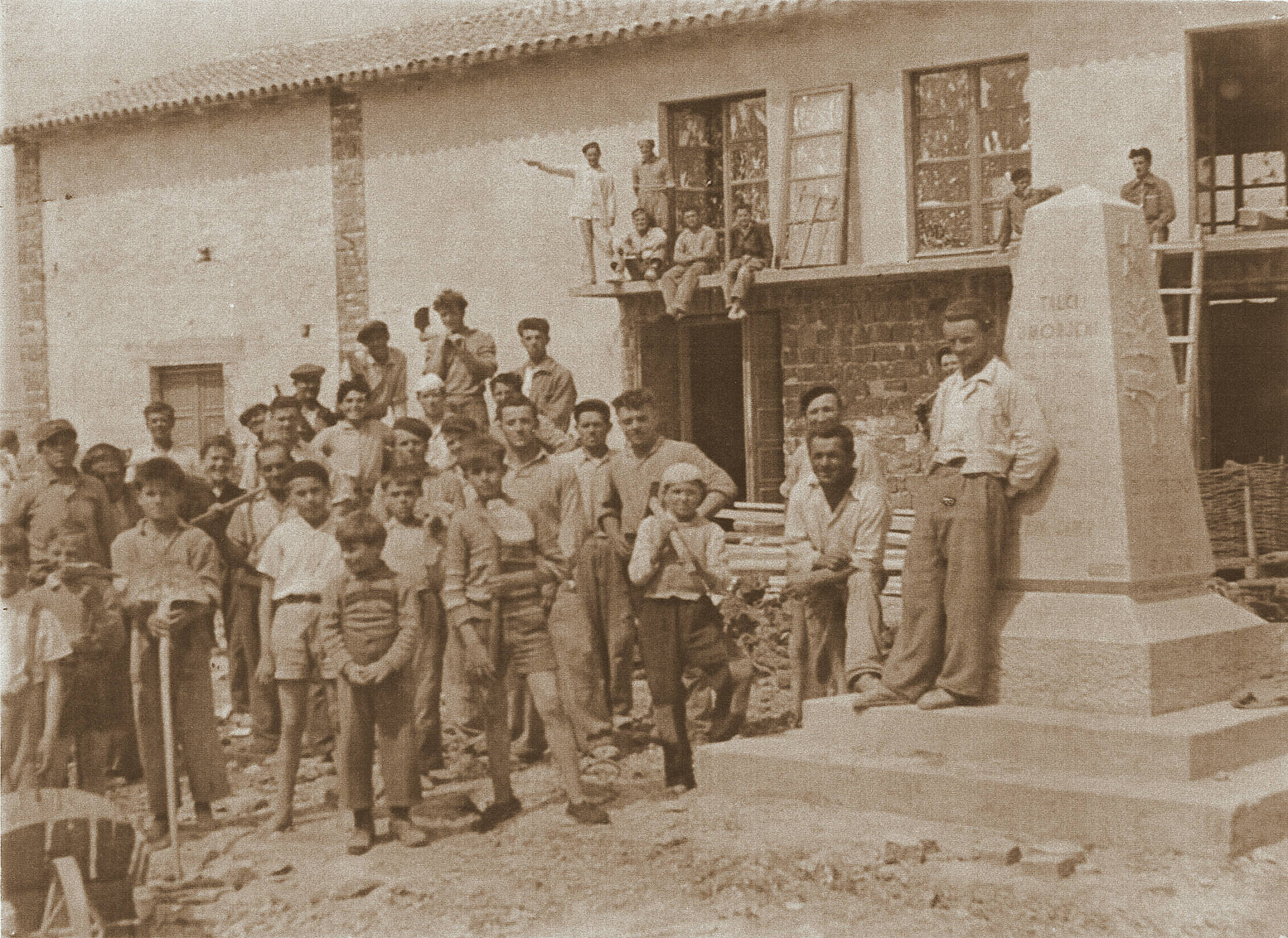 The Zmaga (“Victory”) cultural centre in Nova Vas was opened on 1 May 1953.
The Zmaga (“Victory”) cultural centre in Nova Vas was opened on 1 May 1953.
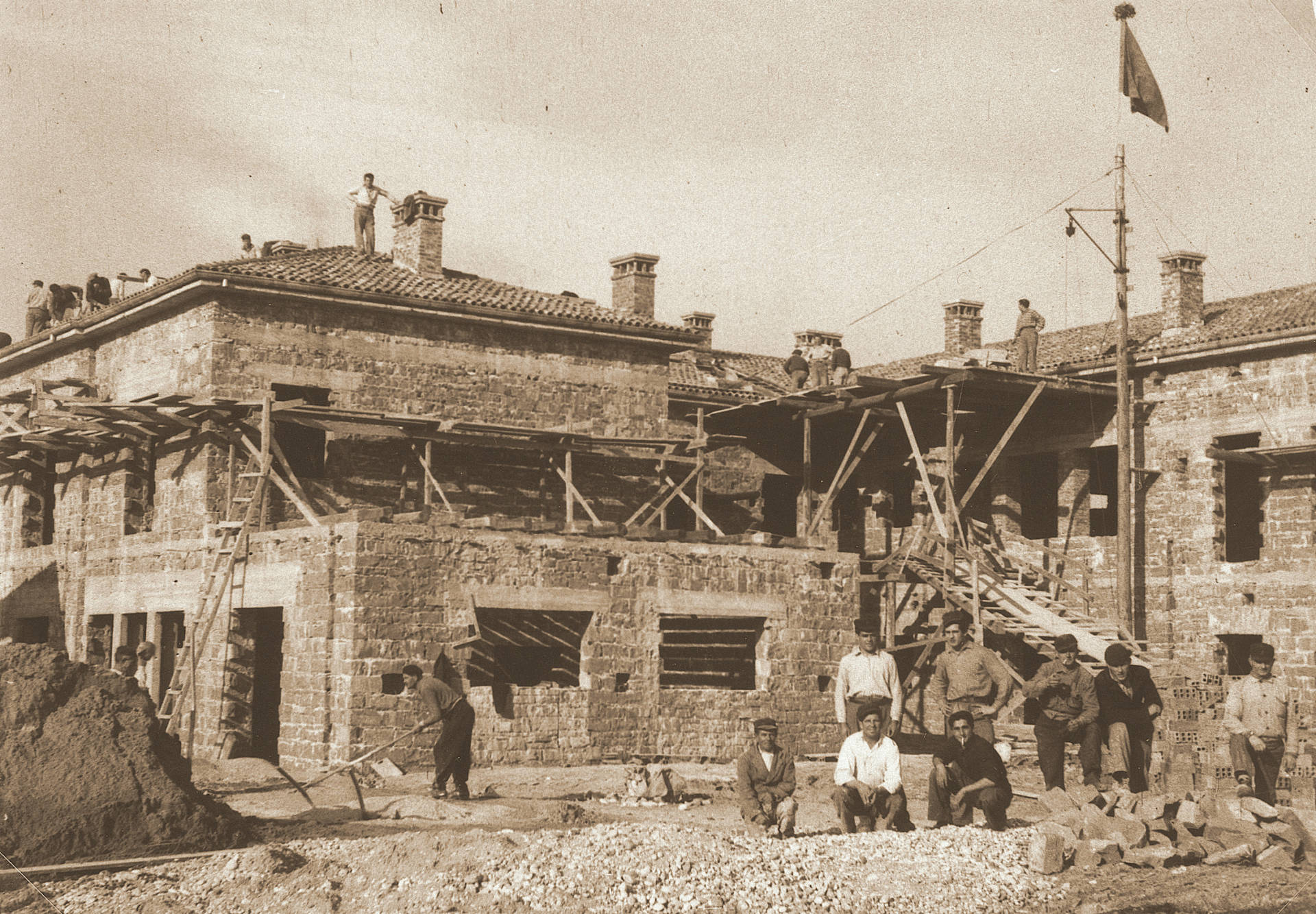 Škofije, 1951 – construction of the cooperative building.
Škofije, 1951 – construction of the cooperative building.
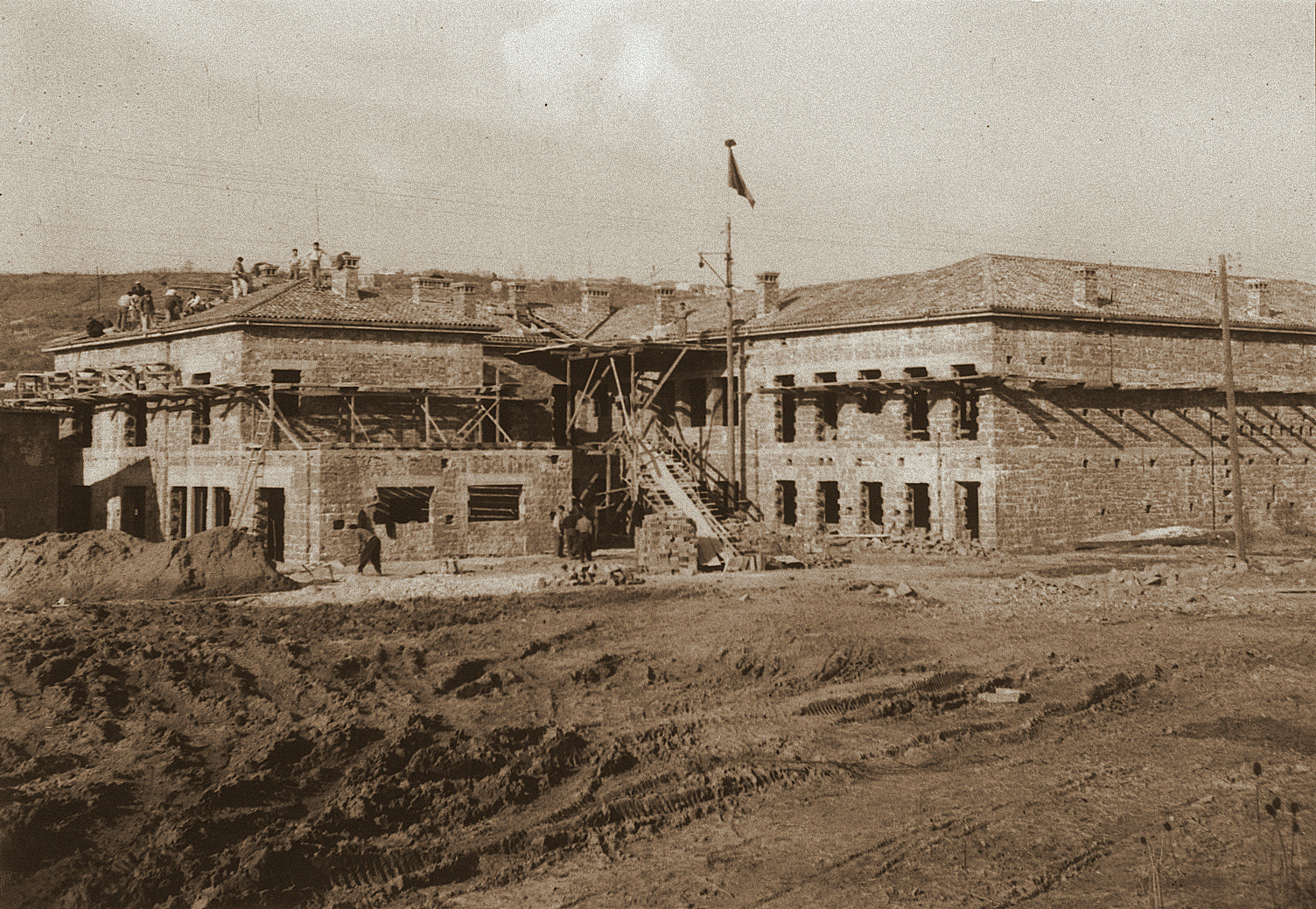 Škofije, 1951 – construction of the cooperative building.
Škofije, 1951 – construction of the cooperative building.
 Sveti Peter, 1953 – construction of the house of culture.
Sveti Peter, 1953 – construction of the house of culture.
 Shock worker Vittorio Tinelli. Shock worker’s badges are visible on the jacket of his work brigade uniform and the rank insignia of a work brigade commander can be seen on his sleeve.
Shock worker Vittorio Tinelli. Shock worker’s badges are visible on the jacket of his work brigade uniform and the rank insignia of a work brigade commander can be seen on his sleeve.
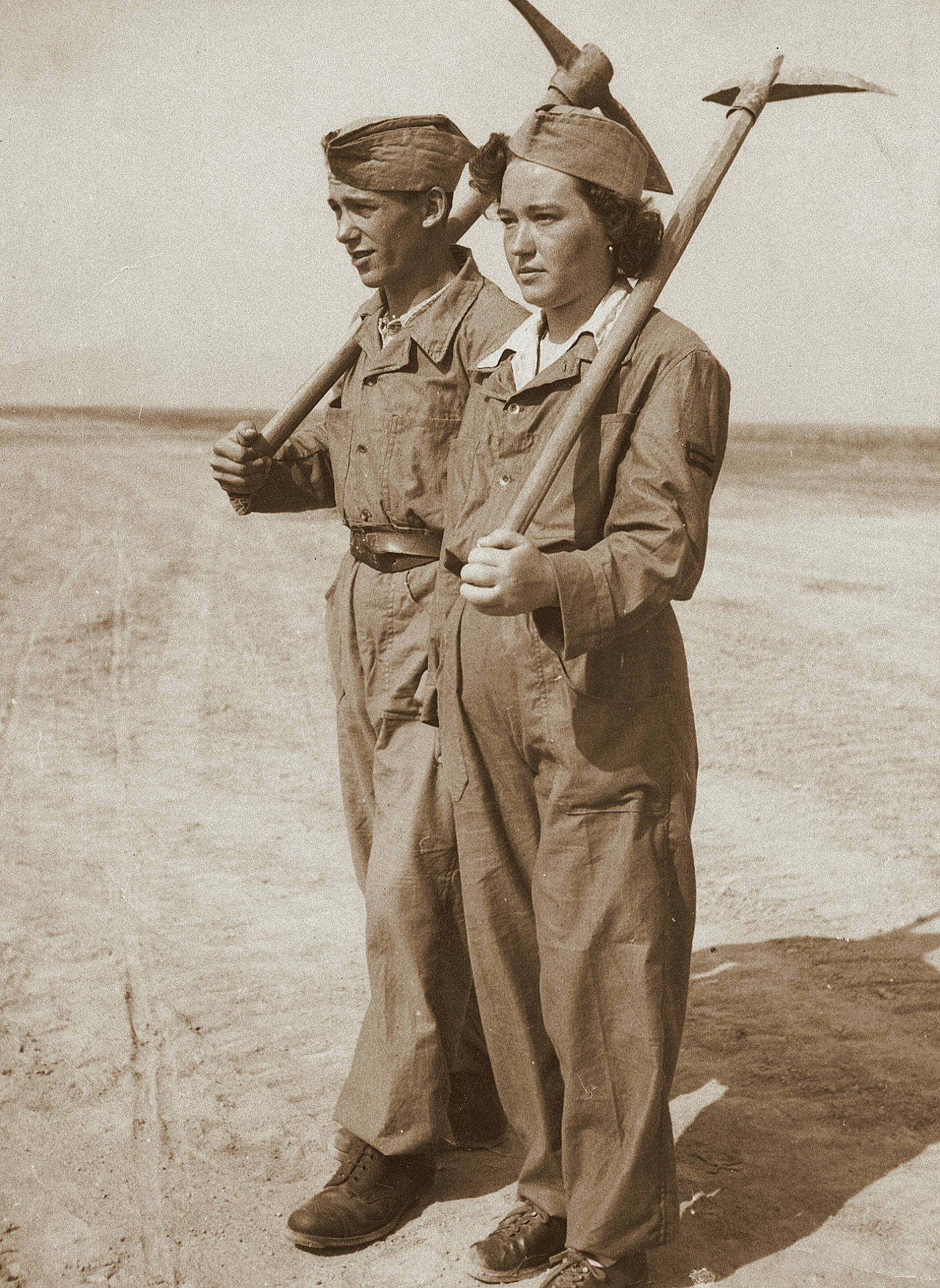 Shock worker Vittorio Tinelli. Shock worker’s badges are visible on the jacket of his work brigade uniform and the rank insignia of a work brigade commander can be seen on his sleeve.
Shock worker Vittorio Tinelli. Shock worker’s badges are visible on the jacket of his work brigade uniform and the rank insignia of a work brigade commander can be seen on his sleeve.
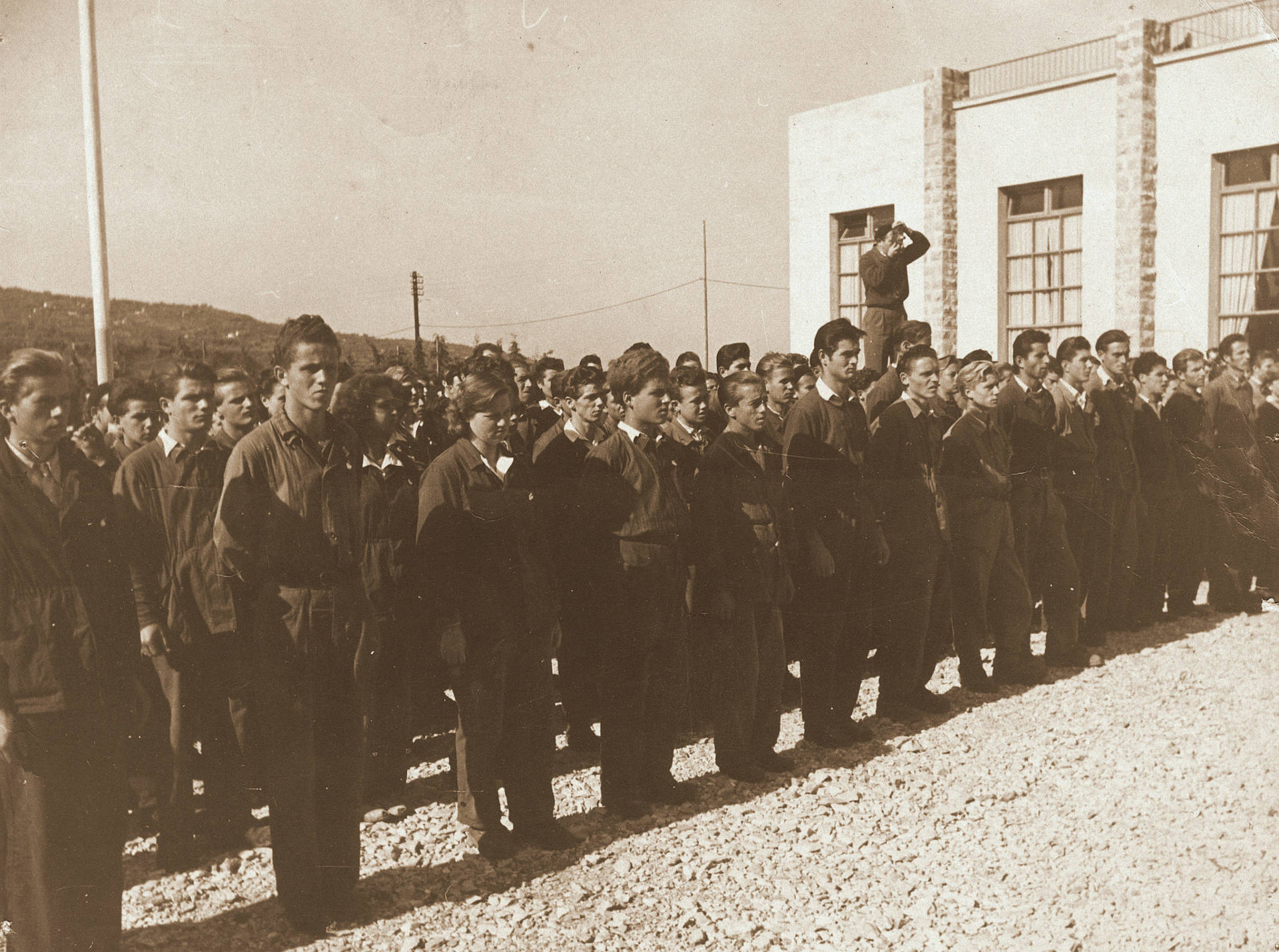 Koper, 1950 – assembly of the “Antonio Bonifacio” youth work brigade on its return from Zemun.
Koper, 1950 – assembly of the “Antonio Bonifacio” youth work brigade on its return from Zemun.